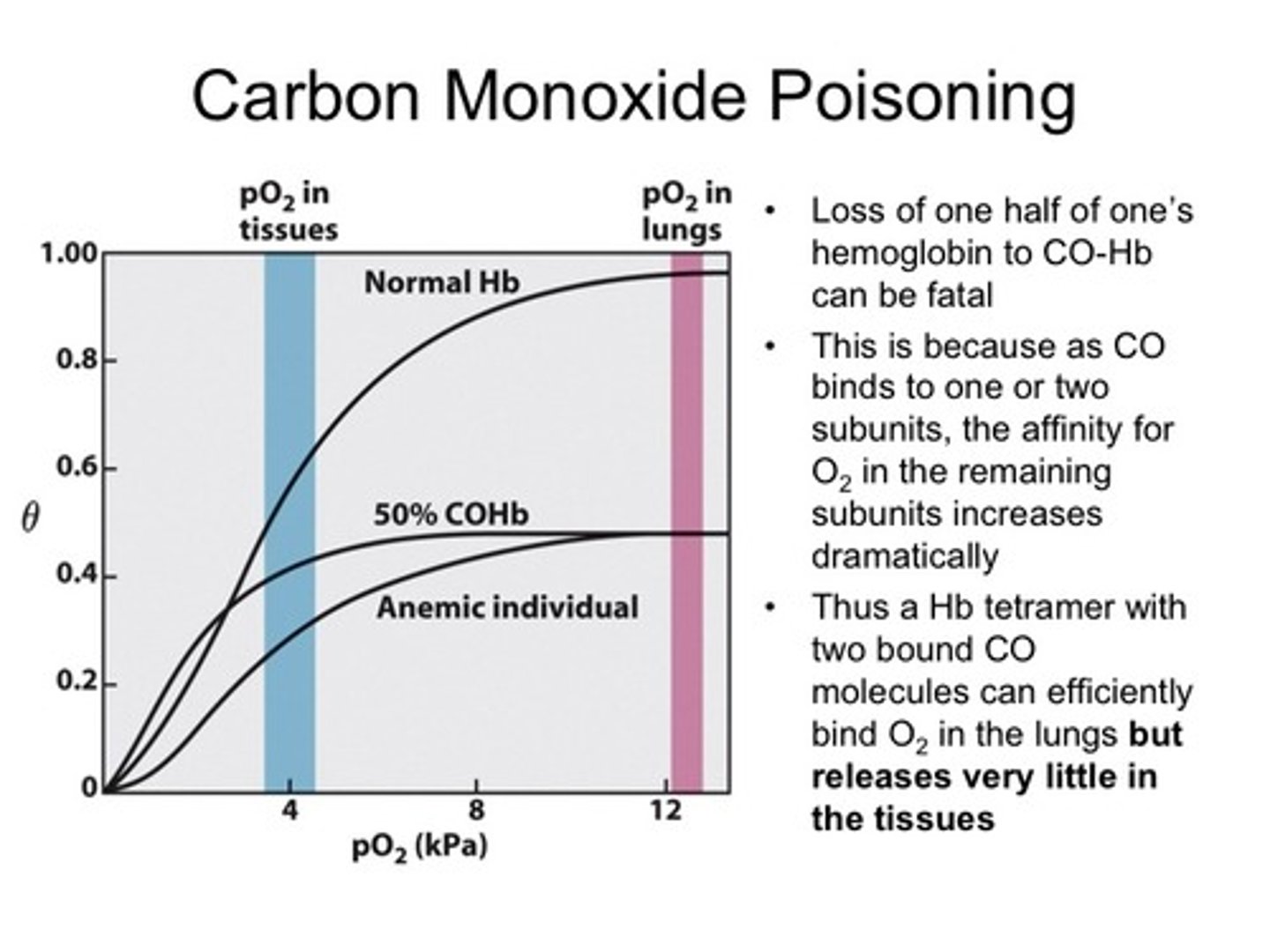Exam III Answers
1/43
There's no tags or description
Looks like no tags are added yet.
Name | Mastery | Learn | Test | Matching | Spaced |
|---|
No study sessions yet.
44 Terms
Which of the following does NOT normally appear within the filtered fluid of Bowman's space?
Erythrocytes
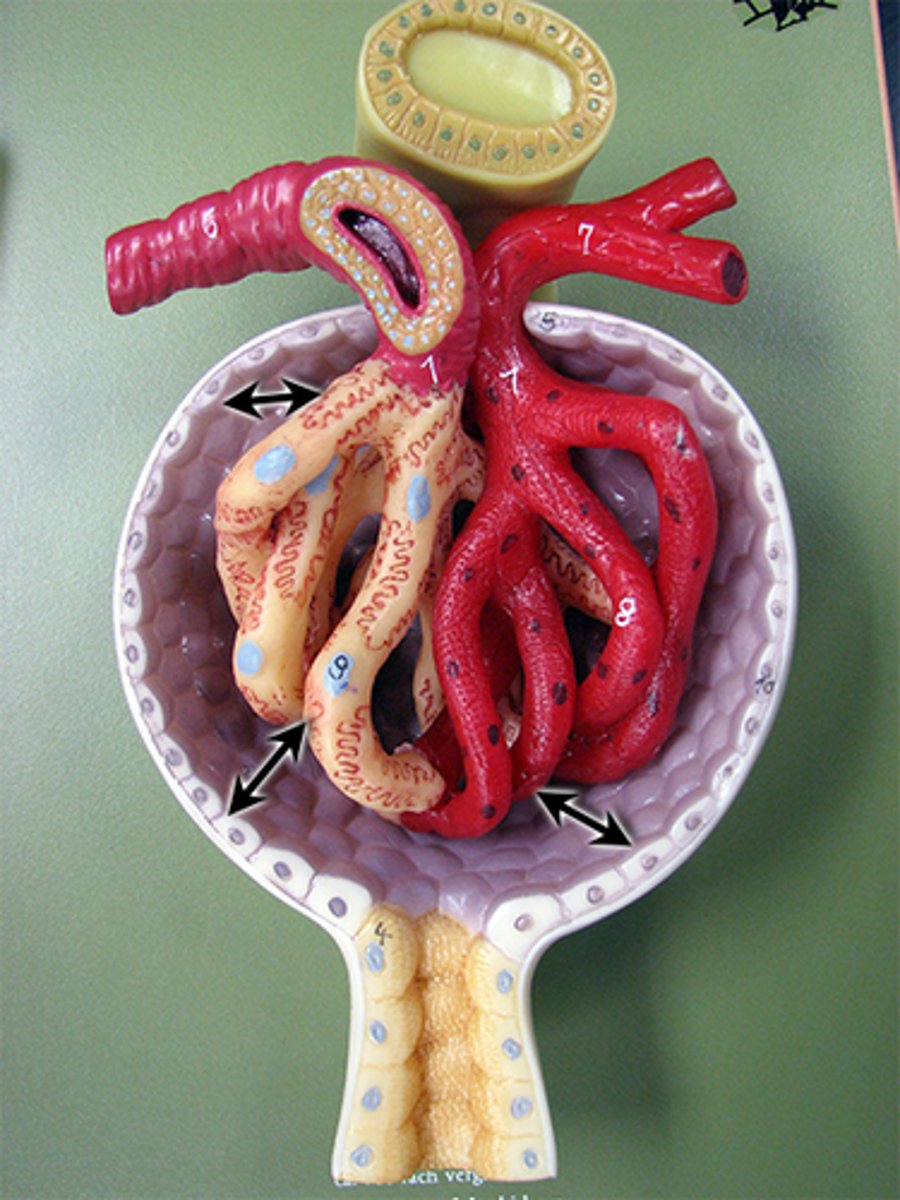
Para-aminohippurate (PAH) is an effective marker for renal plasma flow (RPF) because:
It is freely filtered and strongly secreted by the renal tubules.
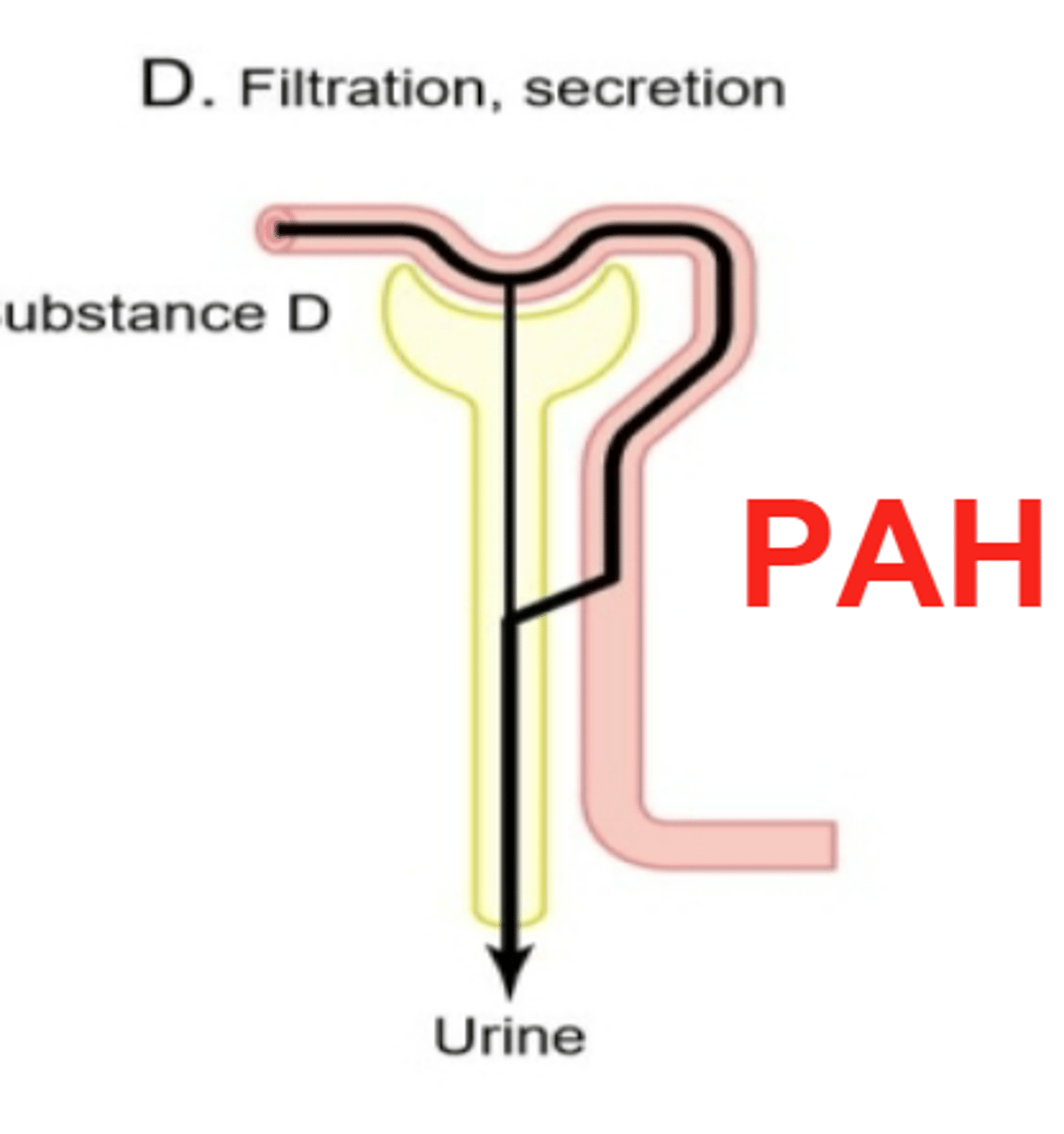
Which of the following would likely increase glomerular filtration rate (GFR)?
Vasoconstriction of the efferent arterioles
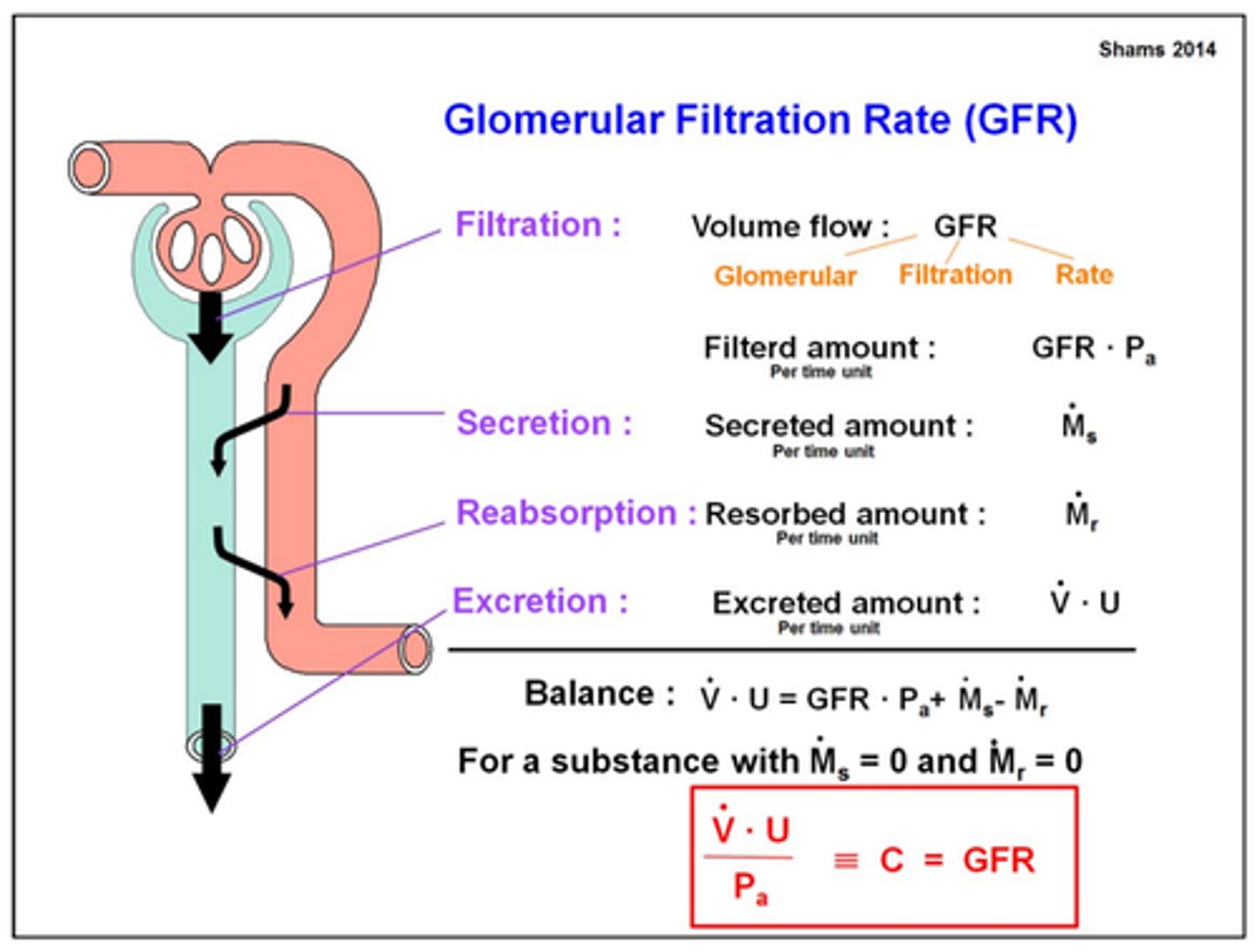
Which one of the following substances is not normally present in urine?
Amino acids
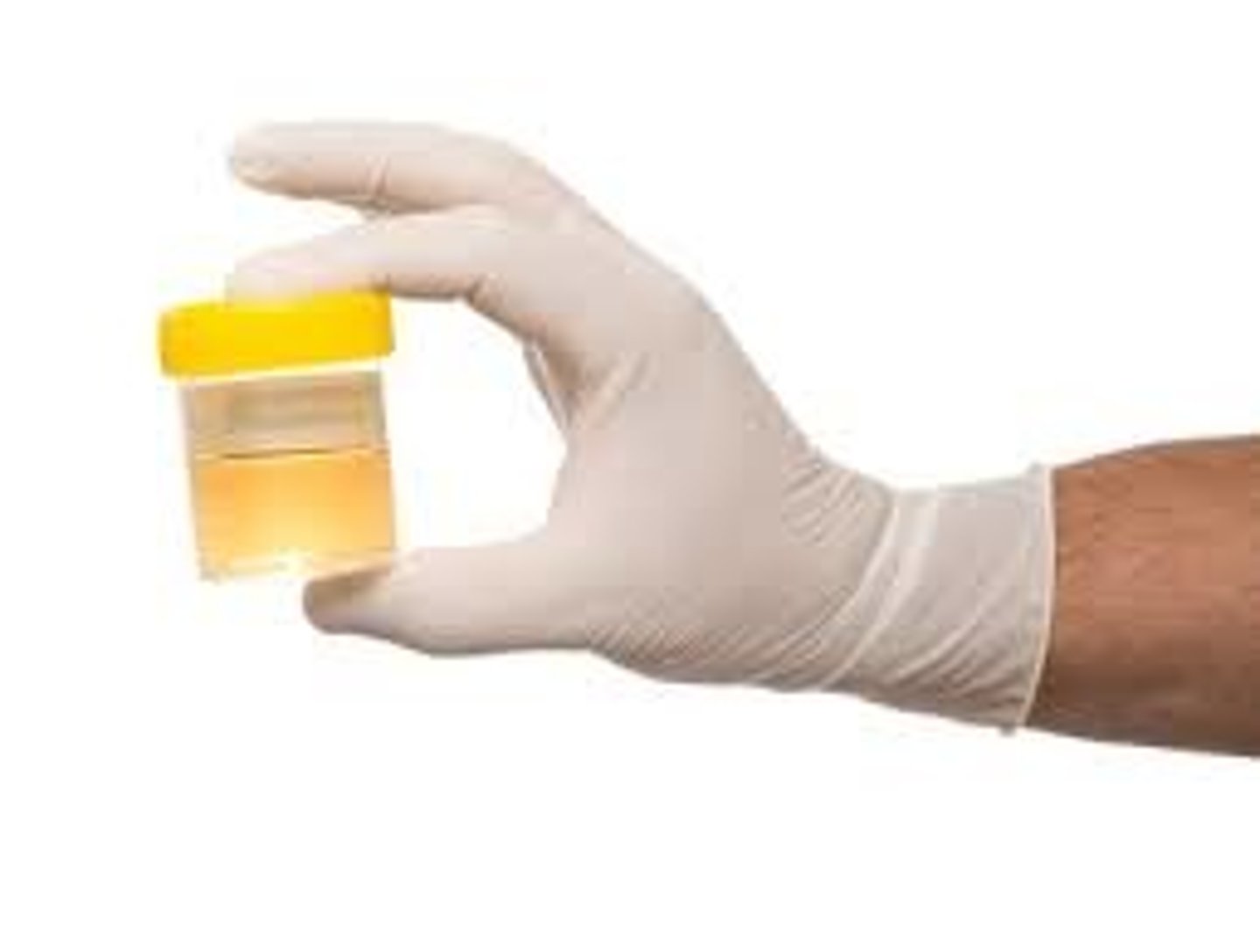
The composition of the primary urine (or ultrafiltrate) in the nephron:
Changes as the filtrate passes through the tubule
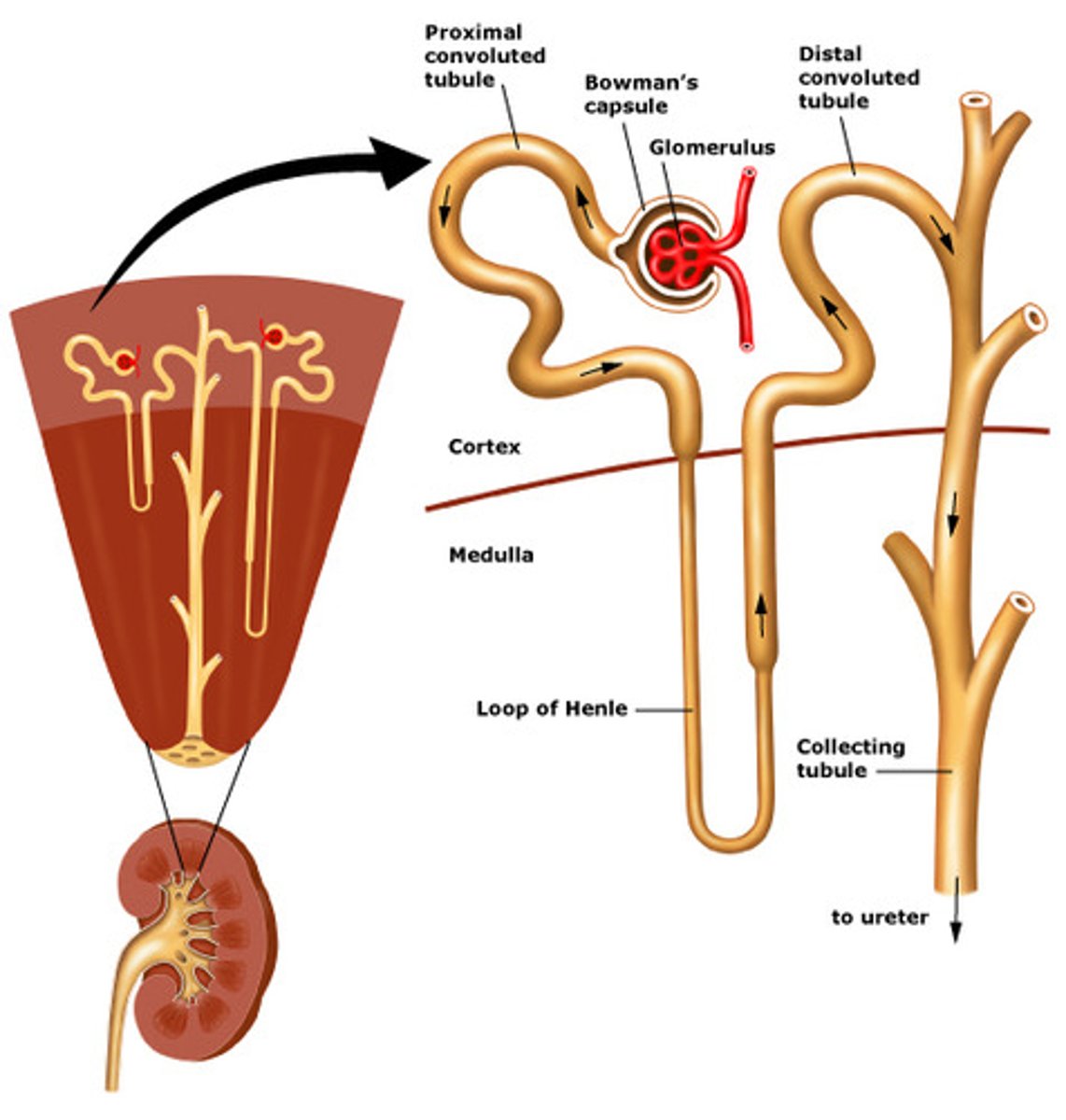
Which substance is filtered at the glomerulus, secreted and excreted by the urinary system?
Substance X
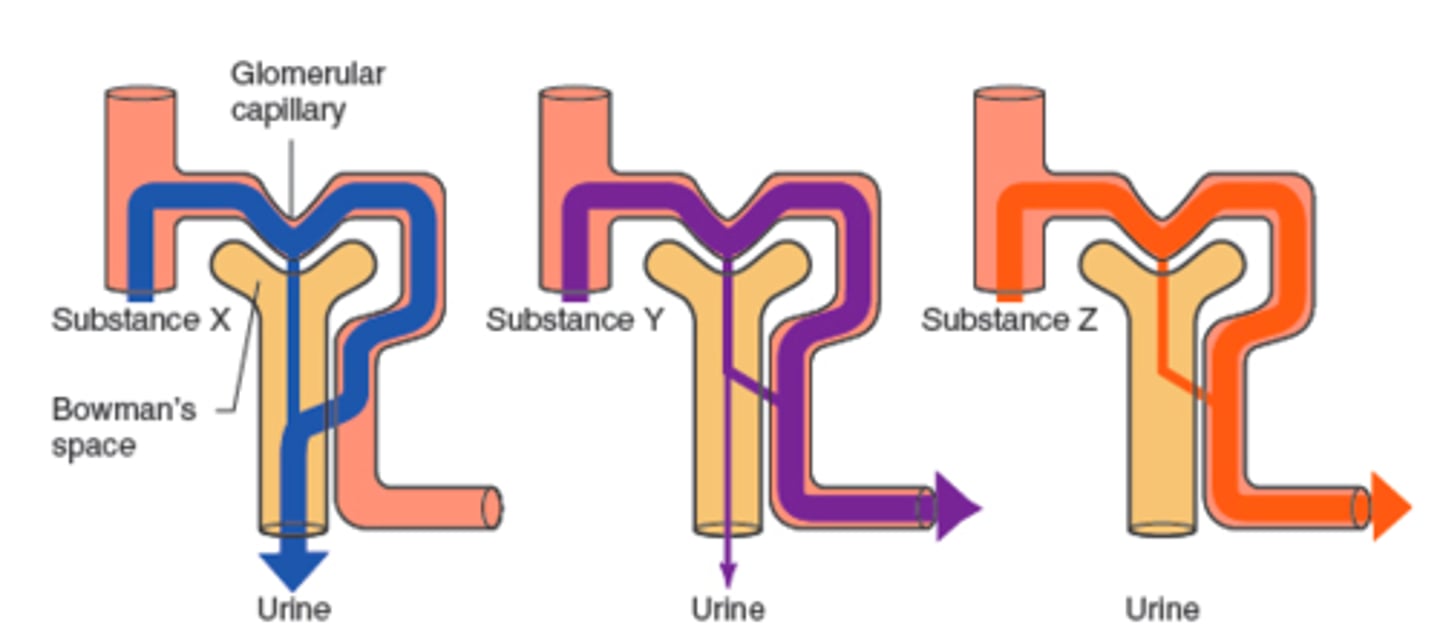
The walls of the ascending limb of the loop of Henle are freely permeable to water. True or False?
False
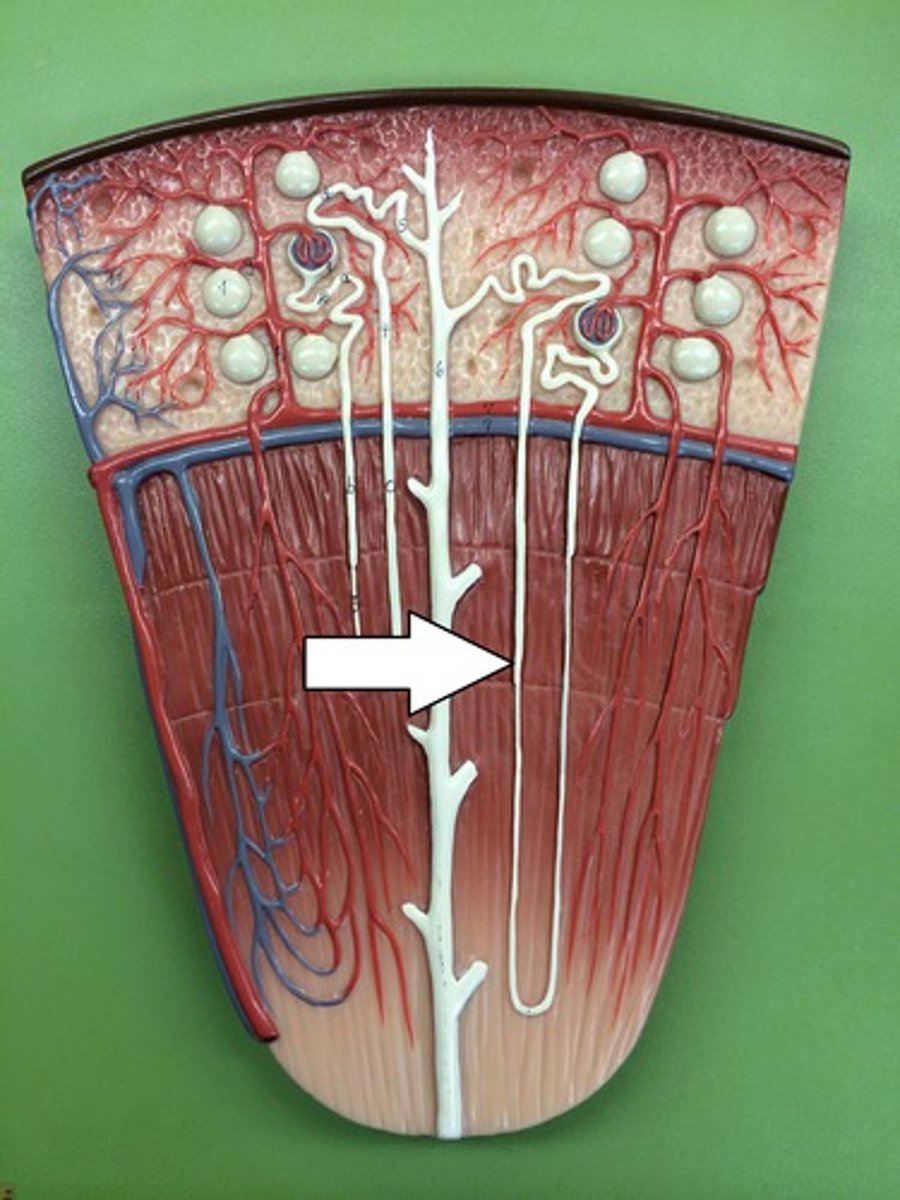
Lasix (or furosemide) is a loop diuretic that inhibits the NKCC (Na+-K+-2Cl-) co-transporter located on the apical membrane of epithelial cells lining the thick ascending limb (TAL) of the loop of Henle. How would this drug affect renal fluid and electrolyte excretion?
Na+, K+, Cl- and fluid excretion would be elevated compared to normal patients.

As with severe dehydration, the main physiological stimulus for vasopressin release into the circulatory system is:
Increased plasma osmolality
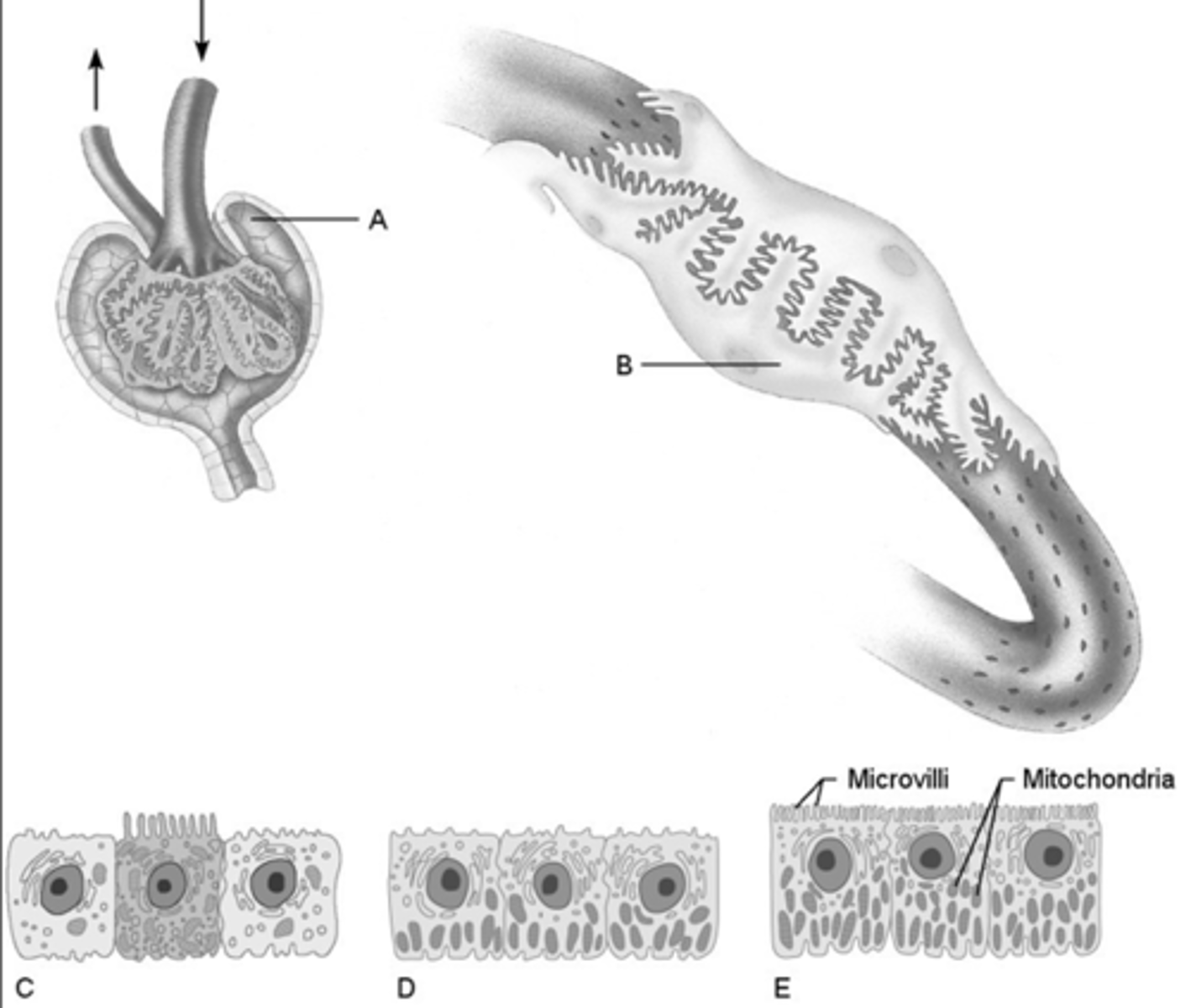
Which of the following most accurately describes the actions of aldosterone?
Aldosterone increases Na+ reabsorption and K+ secretion in the cortical collecting ducts
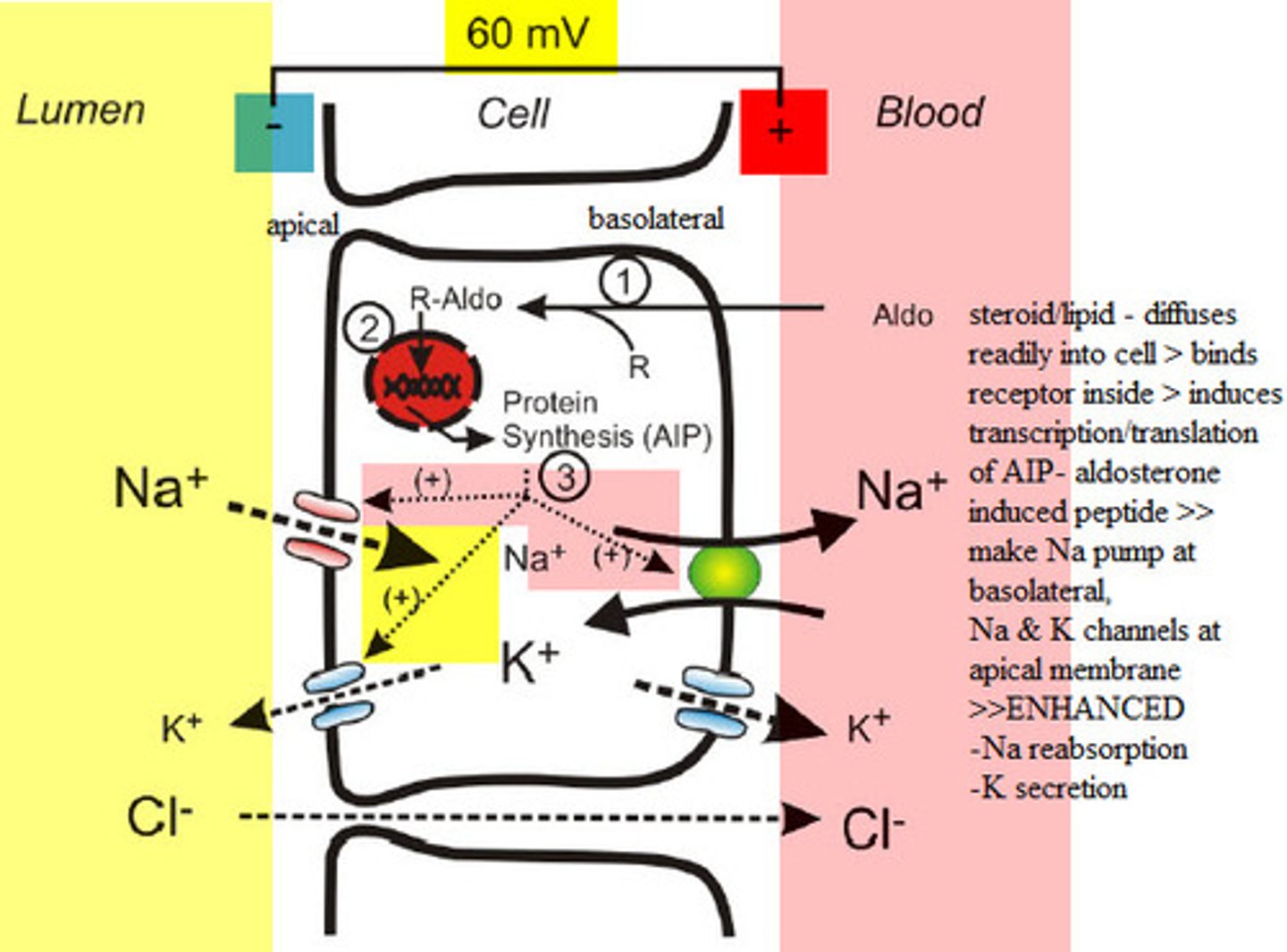
A countercurrent exchanger (e.g., vasa recta) does not require active transport or the use of energy. True or False
True
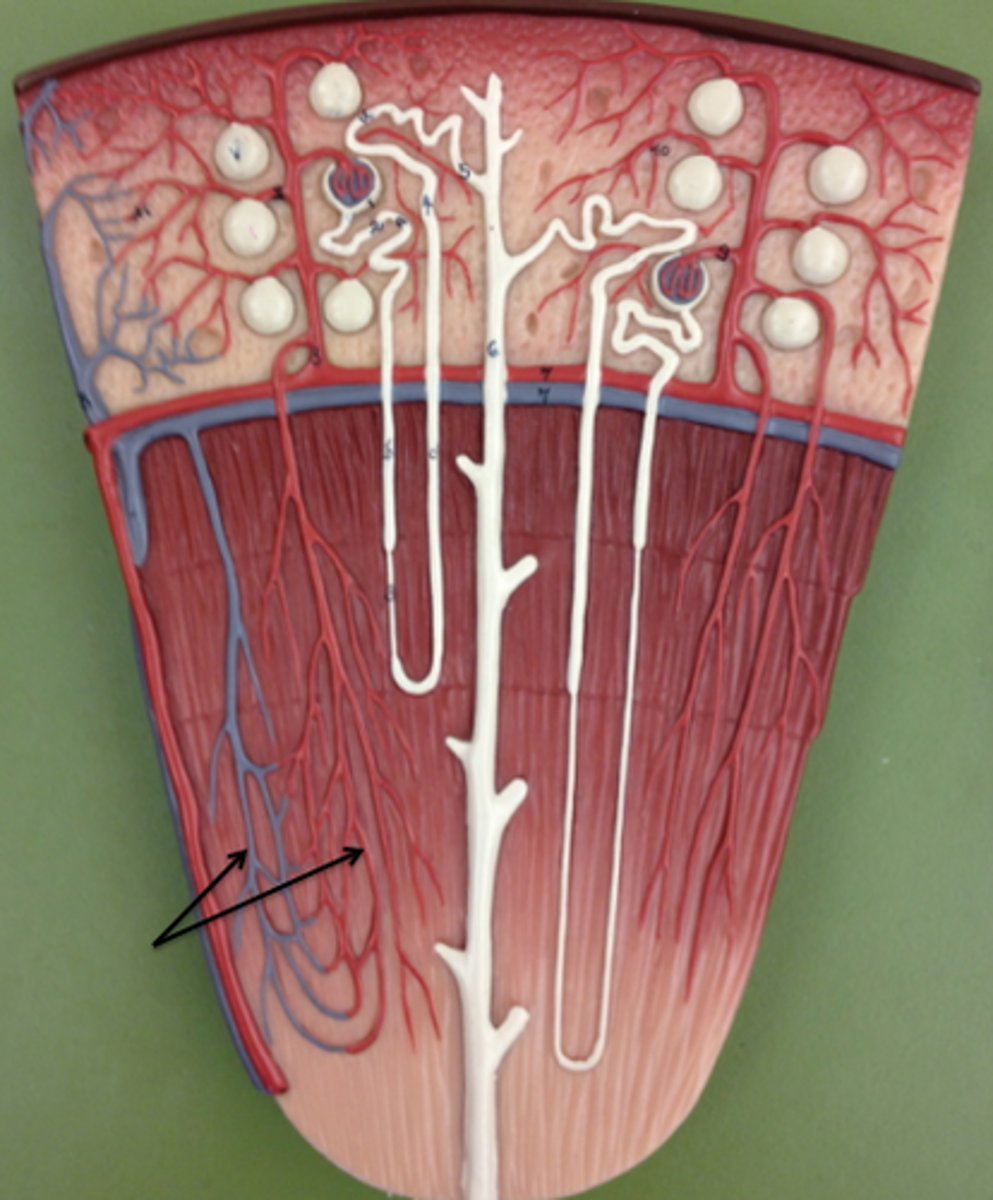
Determine glomerular filtration rate (GFR) given the following information:
Urine PAH concentration = 200 mg/ml
Urine flow = 2 ml/min
Plasma PAH concentration = 40 mg/ml
Filtration fraction = 0.20
2ml/min
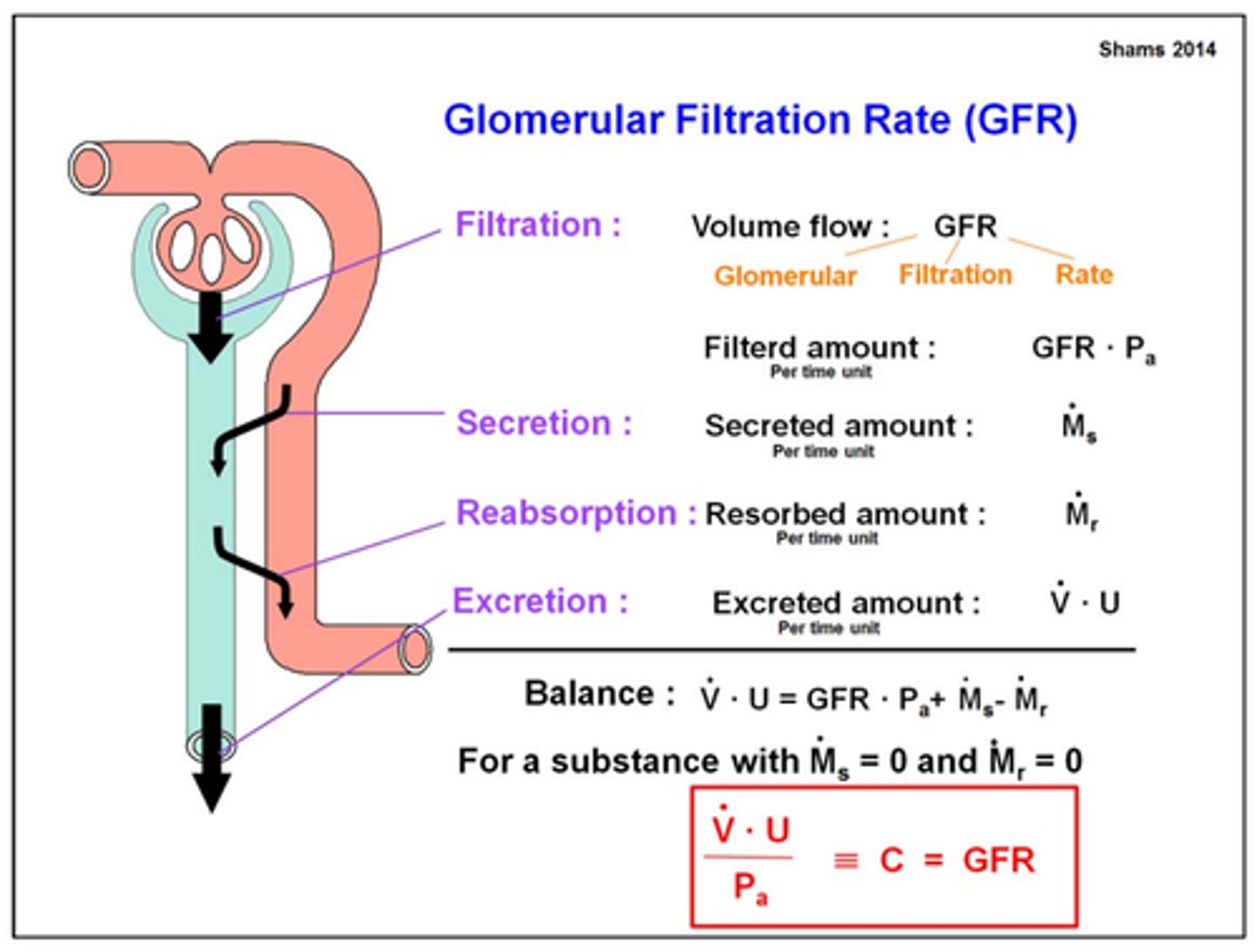
Calculate filtration fraction. Clearance for each substance is calculated using the clearance equation:
Creatinine clearance= 0.8 ml/min
PAH clearance= 4 ml/min
Urine flow= 2 ml/min
0.2
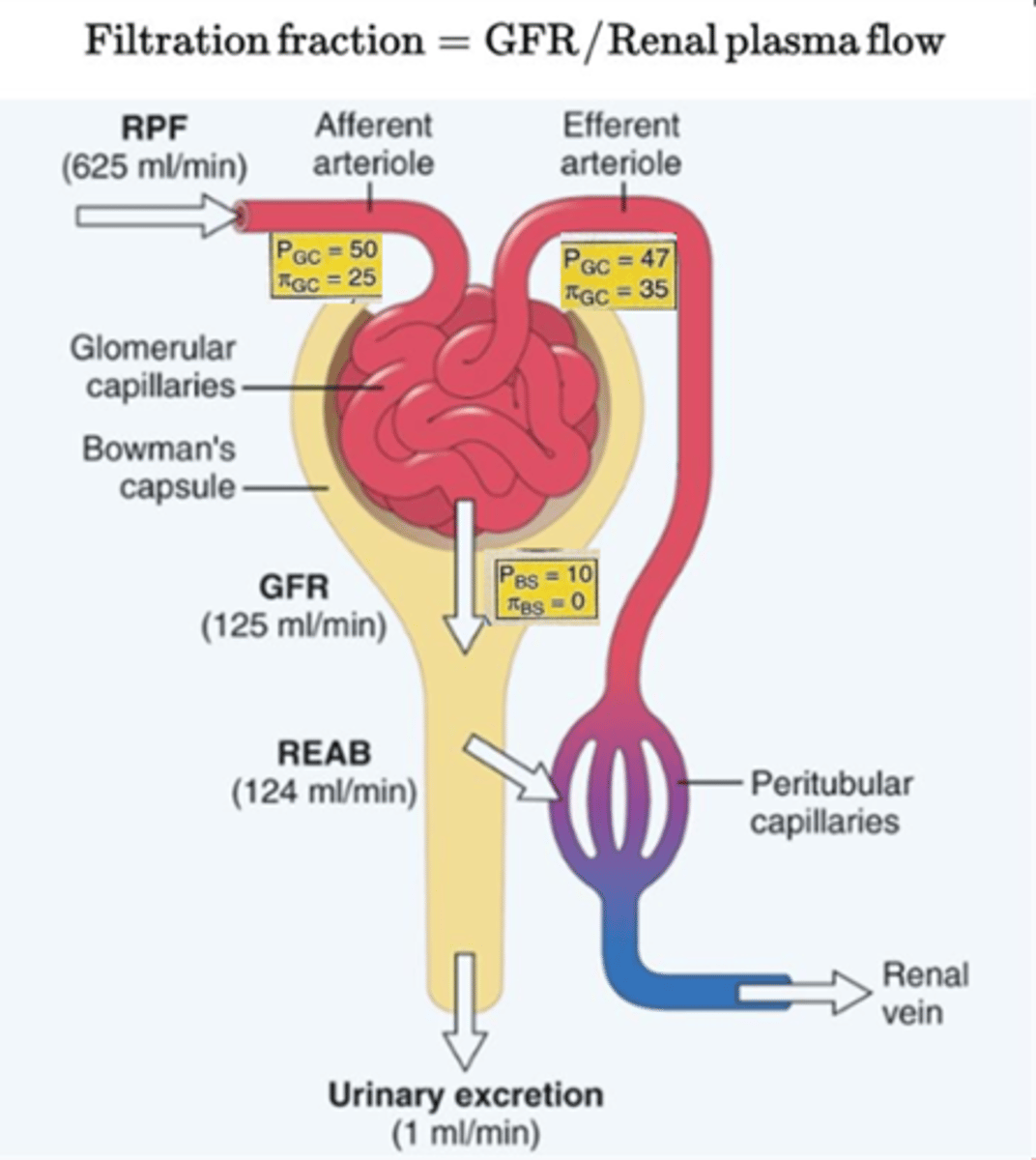
Compared to the renal cortical interstitial fluid, the interstitial fluid of the inner medullary region is hypoosmotic. True or False?
False
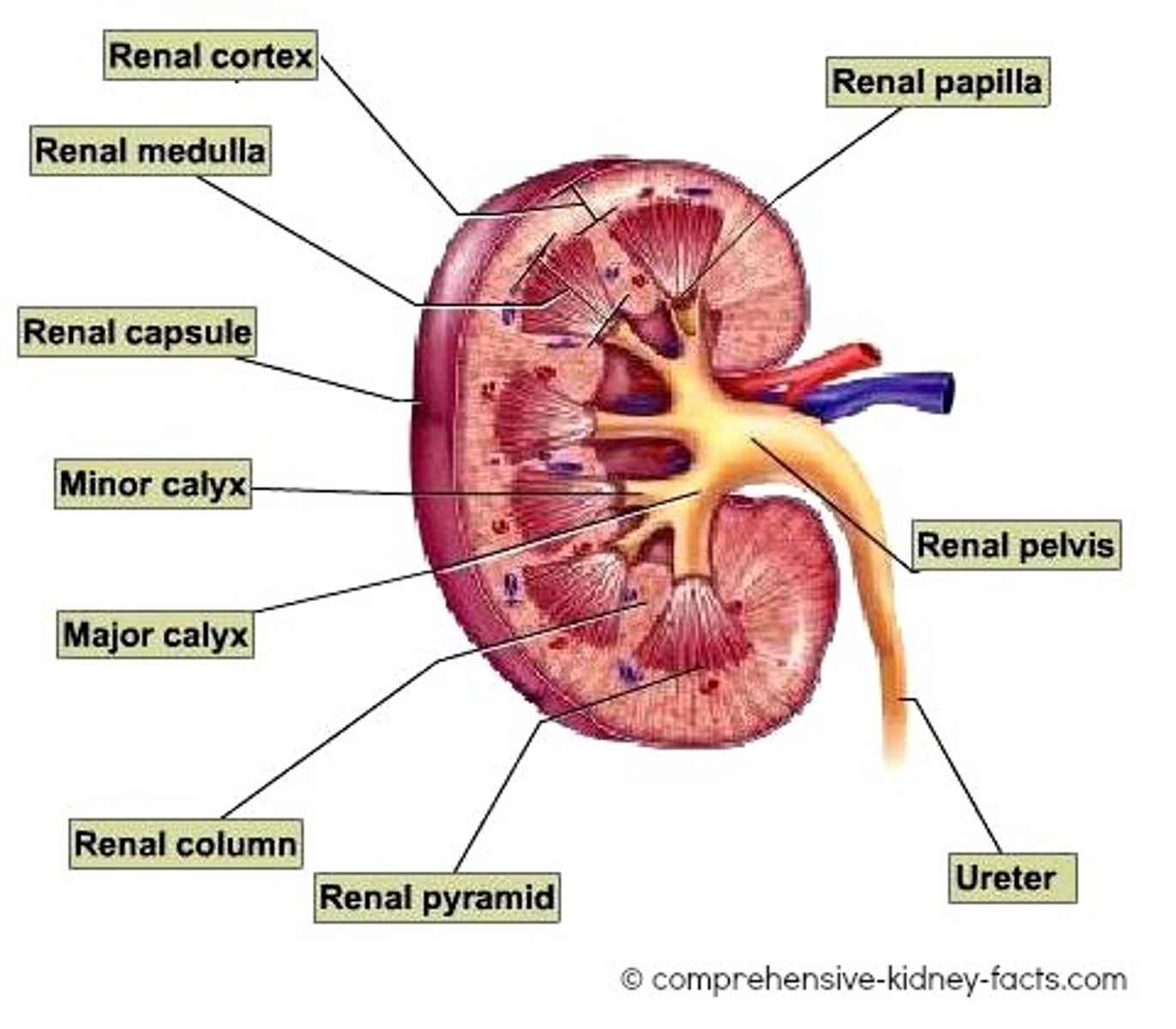
Atrial distension is a stimulus for the secretion of atrial natriuretic factor, which stimulates the reabsorption of sodium and water by the kidneys and acts as an anti-diuretic. True or False?
False
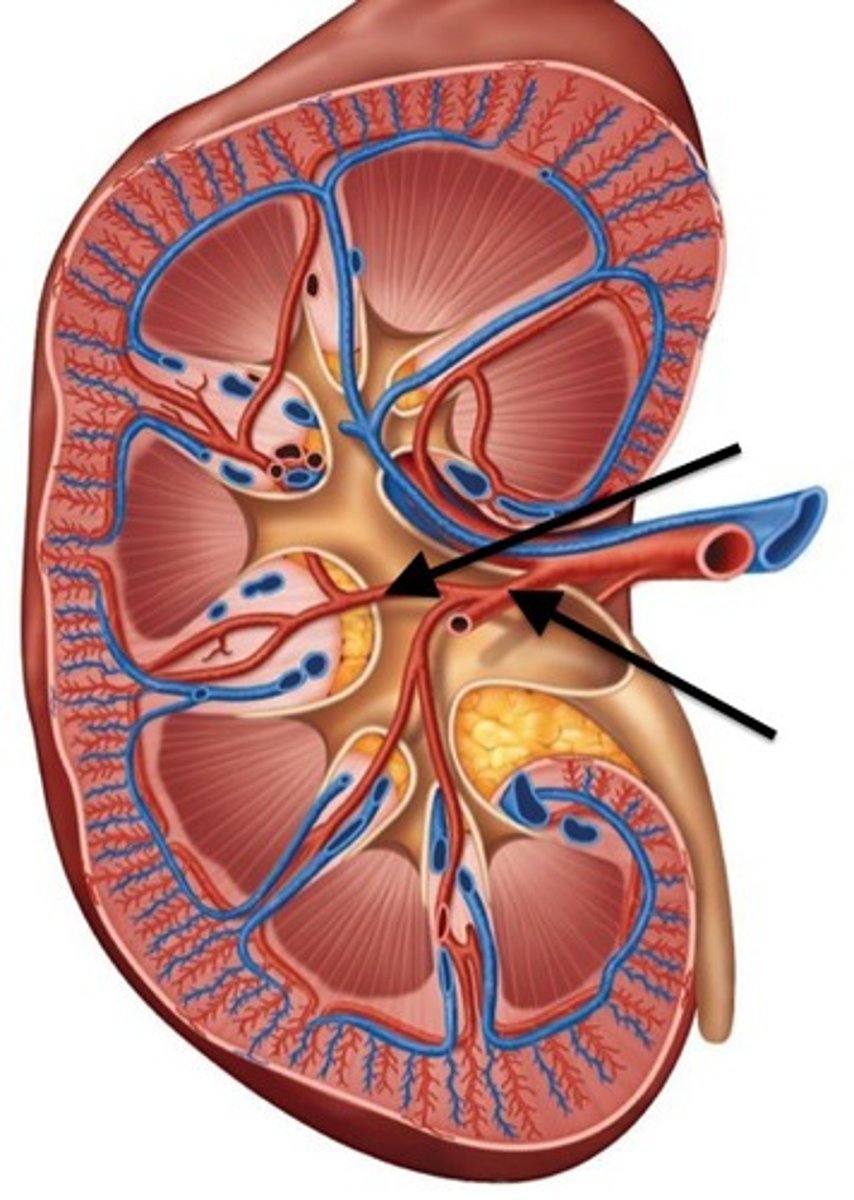
I.D part of glomerulus
Macula densa cells(D)
Podocytes(C)
Mesengial cells(B)
Juxtaglomerular cells(A)
Afferent arterioles(F)
Distal tubule(E)
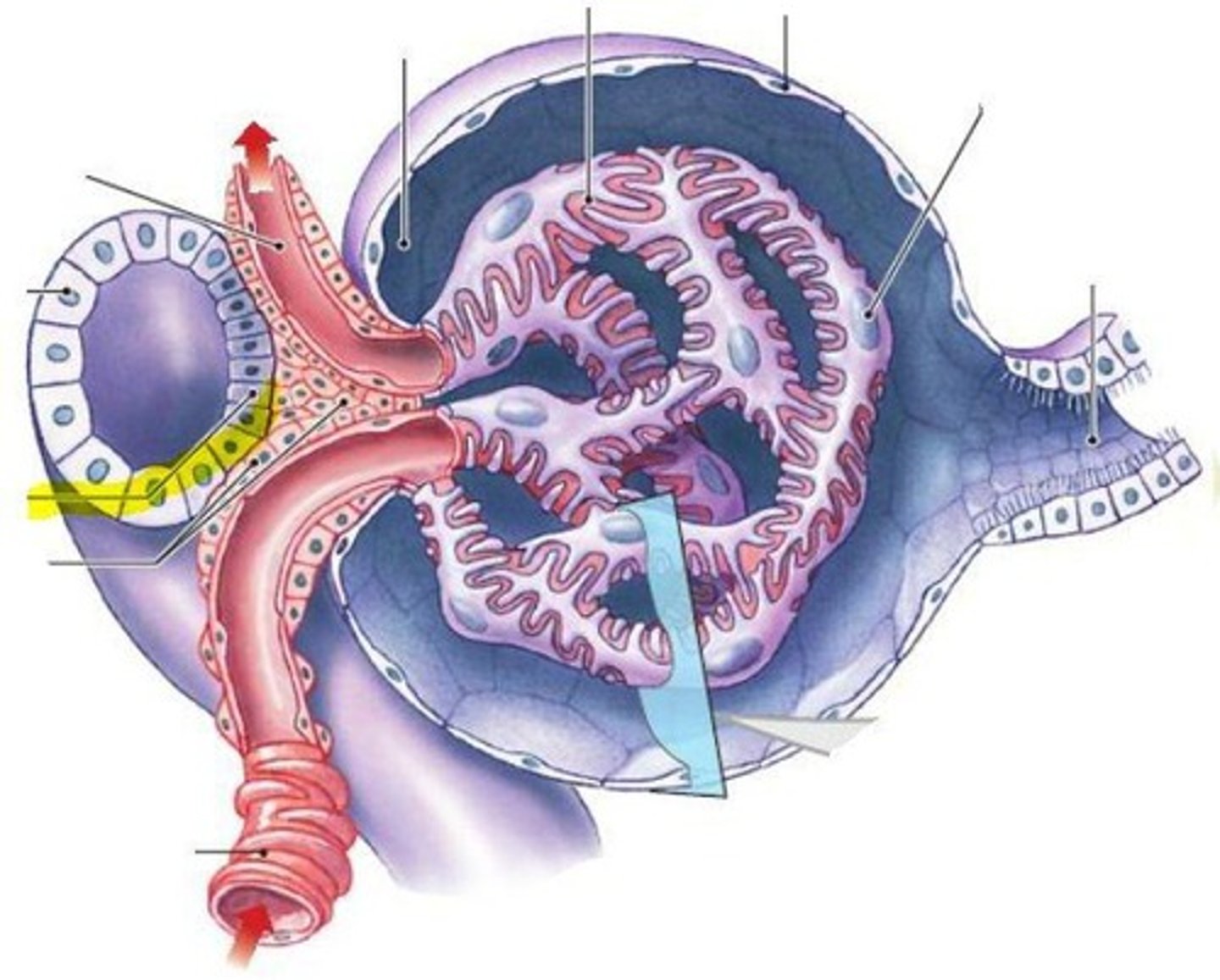
Which of the following drugs is not likely to decrease blood pressure?
Drug that enhances the activity of angiotensin-converting enzyme
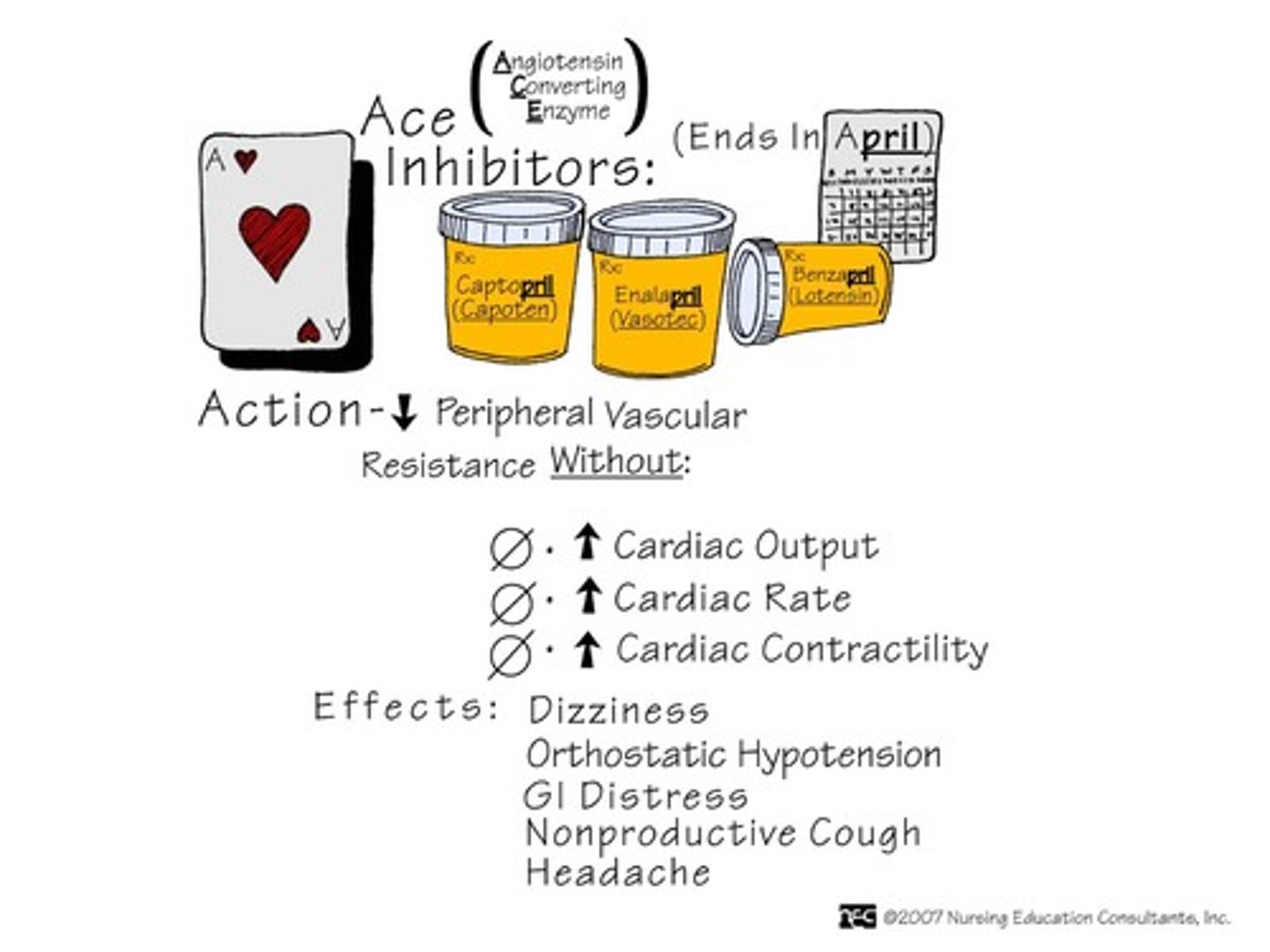
A stimulus for increased aldosterone secretion is increased plasma levels of potassium. True or False?
True
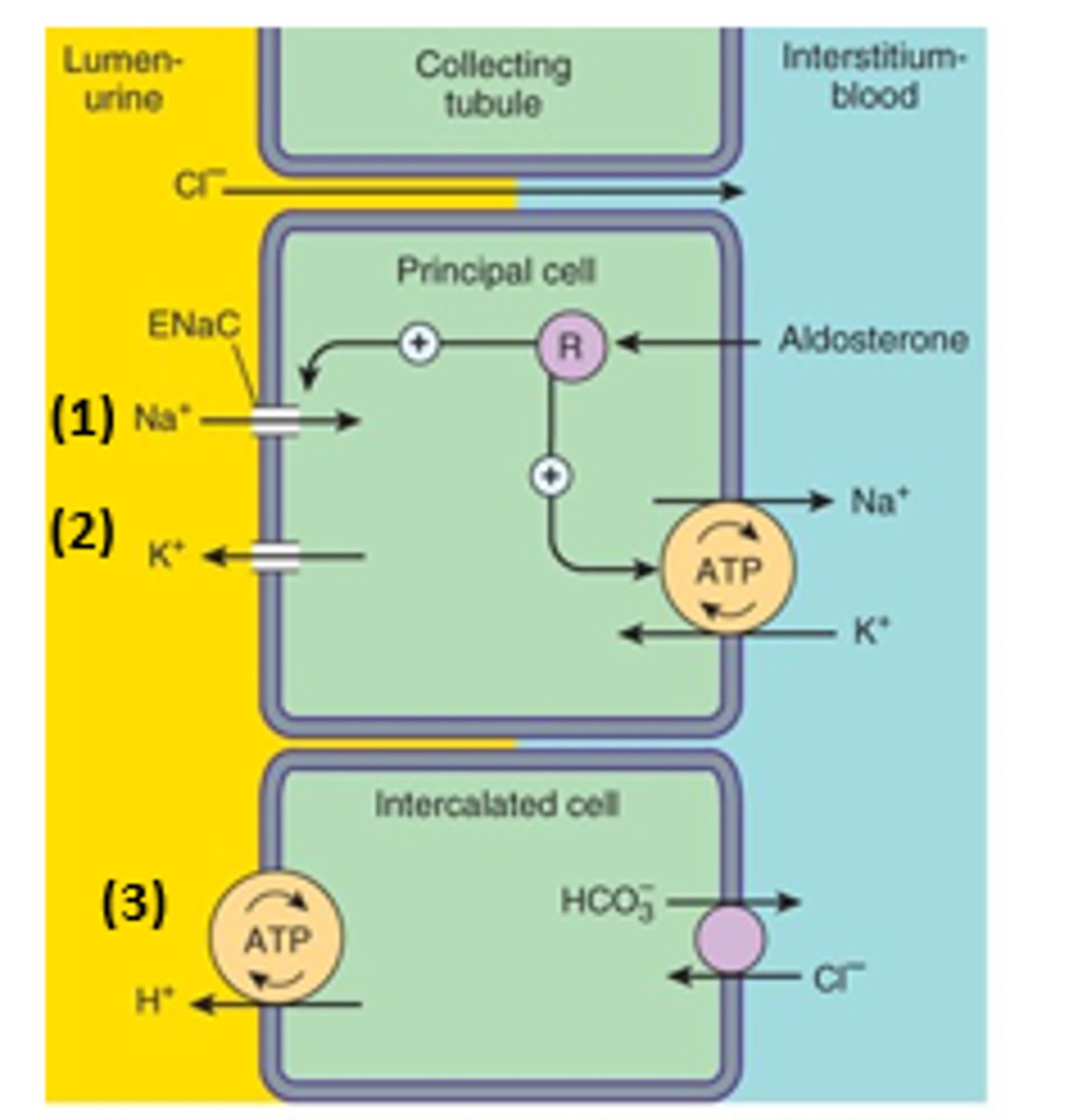
After prolonged exertion in a hot climate and severe dehydration, osmoreceptors in the hypothalamus would detect a(n)____________in plasma osmolarity, leading to_______________secretion of_____________and thus____________renal reabsorption of____________.
Increase, Increase,vasopressin, increased,water
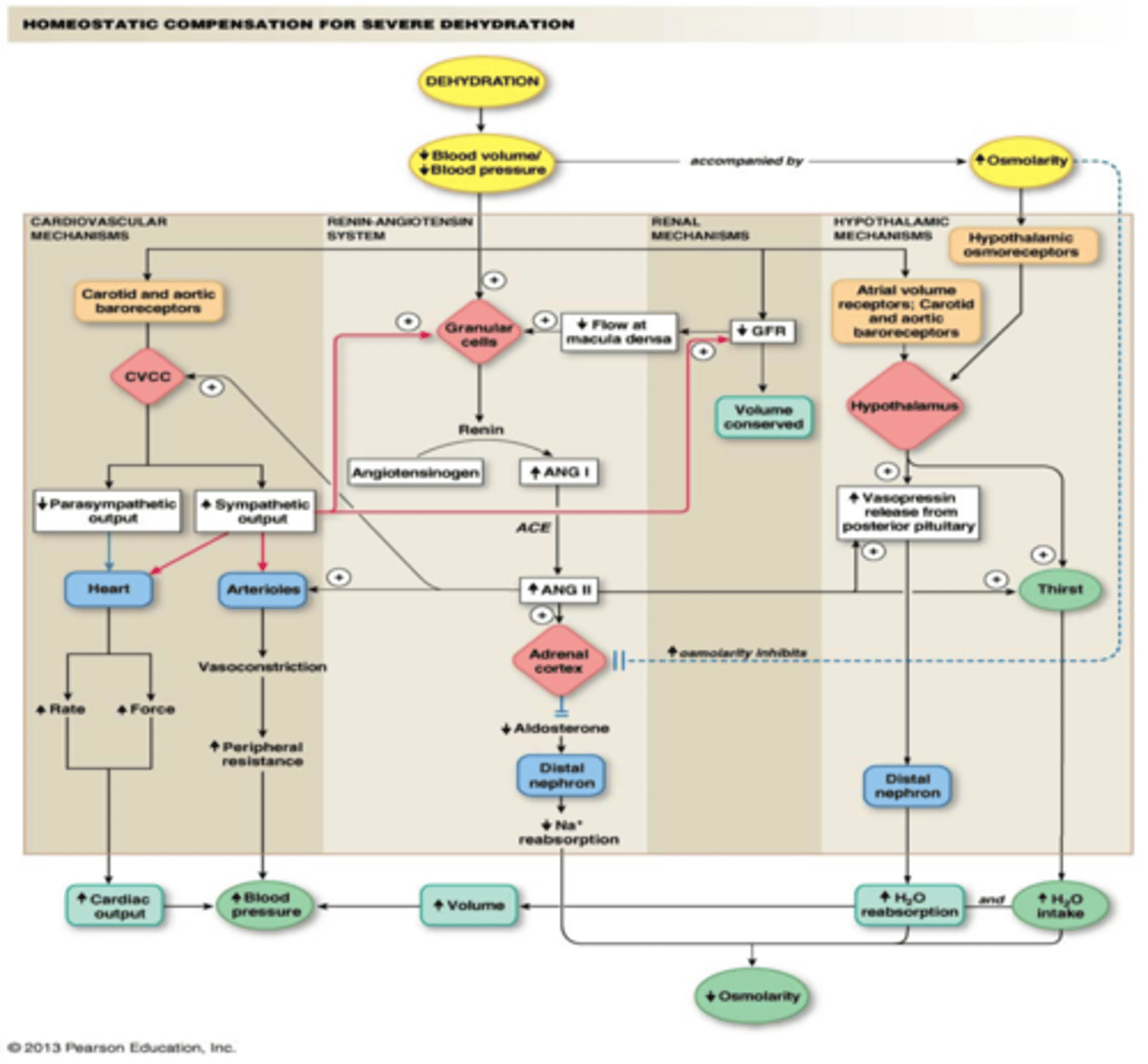
Because of the countercurrent multiplier system in the loop of Henle and its proximity to the medullary collecting ducts:
Hyperosmotic urine can be generated by active salt reabsorption through membranes that are relatively impermeable to water and the diffusion of water through membranes responsive to vasopressin
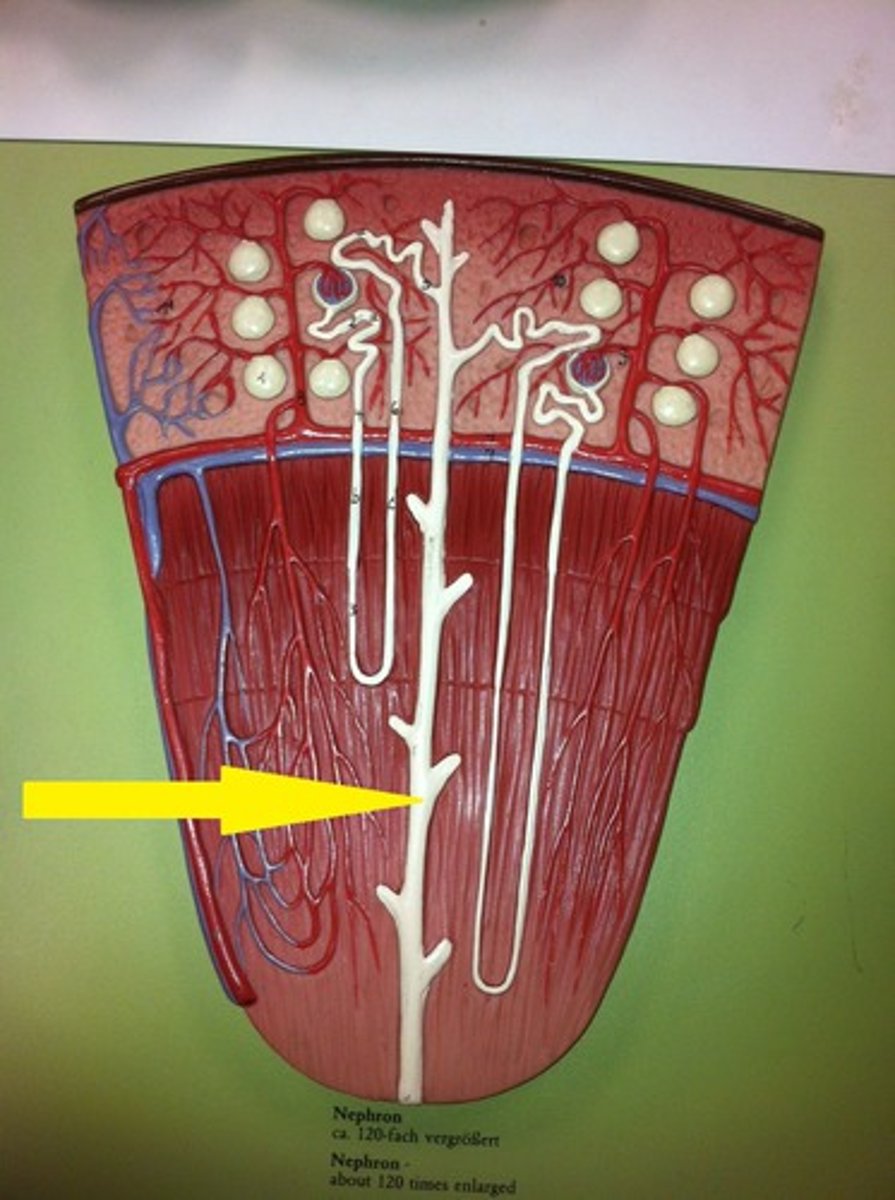
Vasopressin quickly increases the reabsorption of water by the collecting duct. This happens because:
Preformed aquaporin channels are translocated to the membrane, which is a relatively fast response.
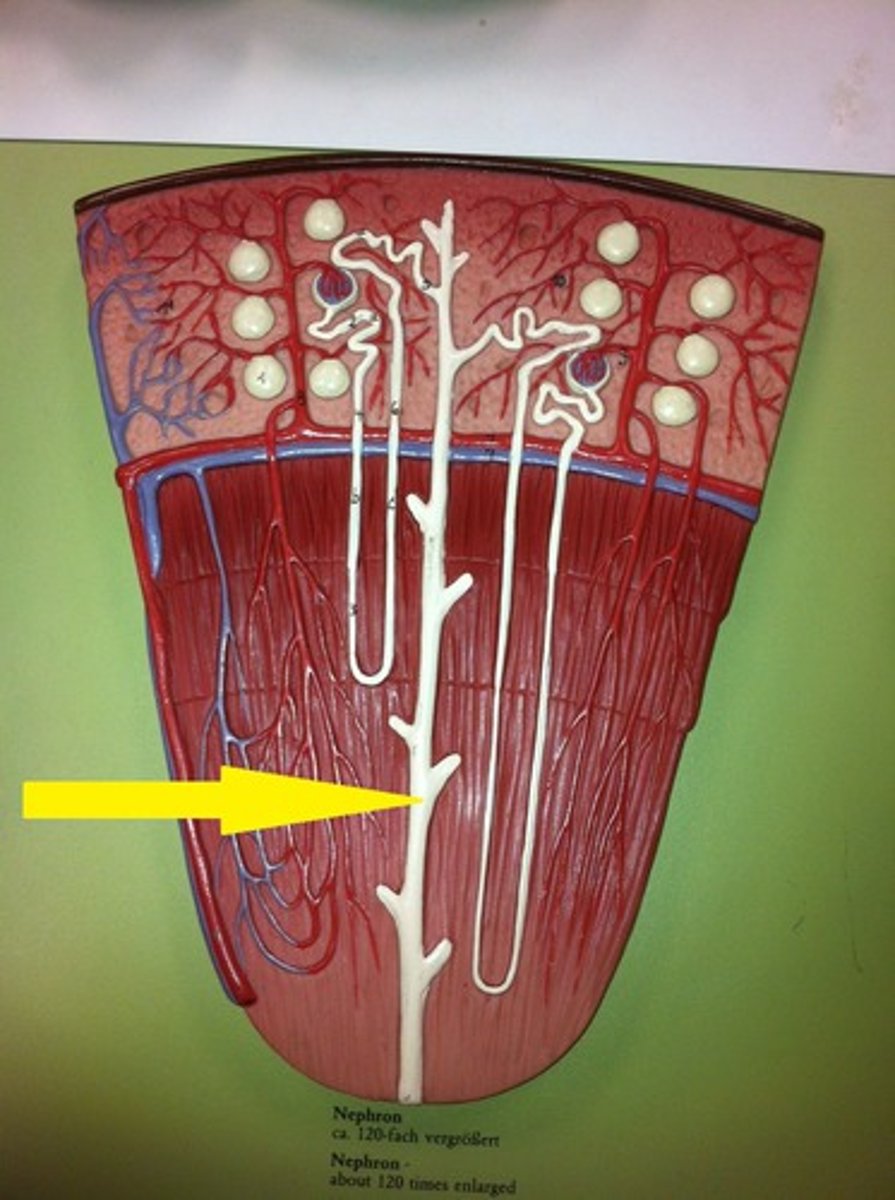
Select all the roles of angiotensin II when it is activated in the renin-angiotensin-aldosterone system:
It increases total peripheral resistance (TPR).
It increases mean arterial pressure (MAP).
It triggers the release of aldosterone from the adrenal cortex.
It increases blood volume.
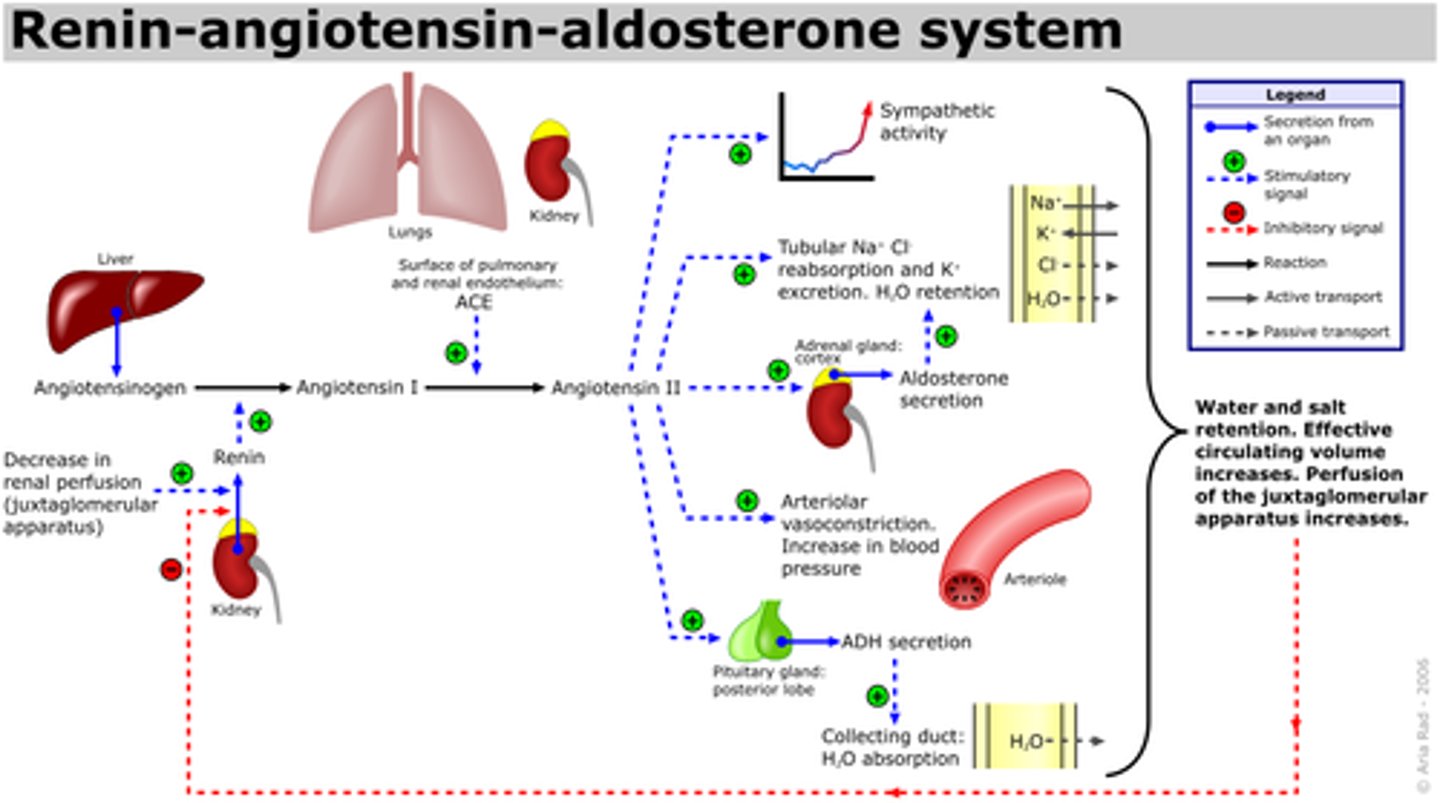
The respiratory system regulates blood pH by changing which of the following parameters:
Alveolar ventilation

Bulk airflow occurs mainly in the:
conducting zone.
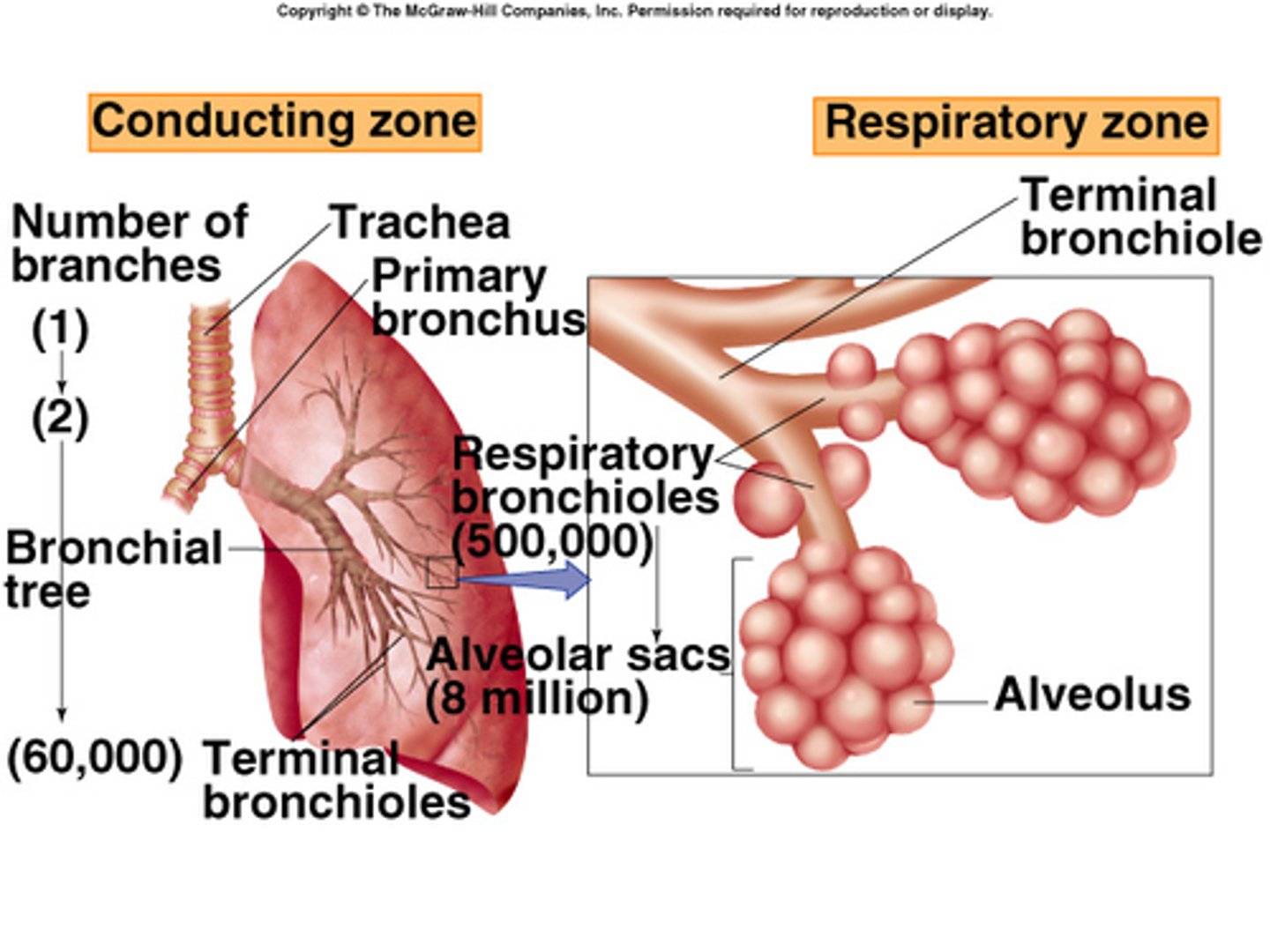
The bronchi and terminal bronchioles are:
part of the anatomic dead space.
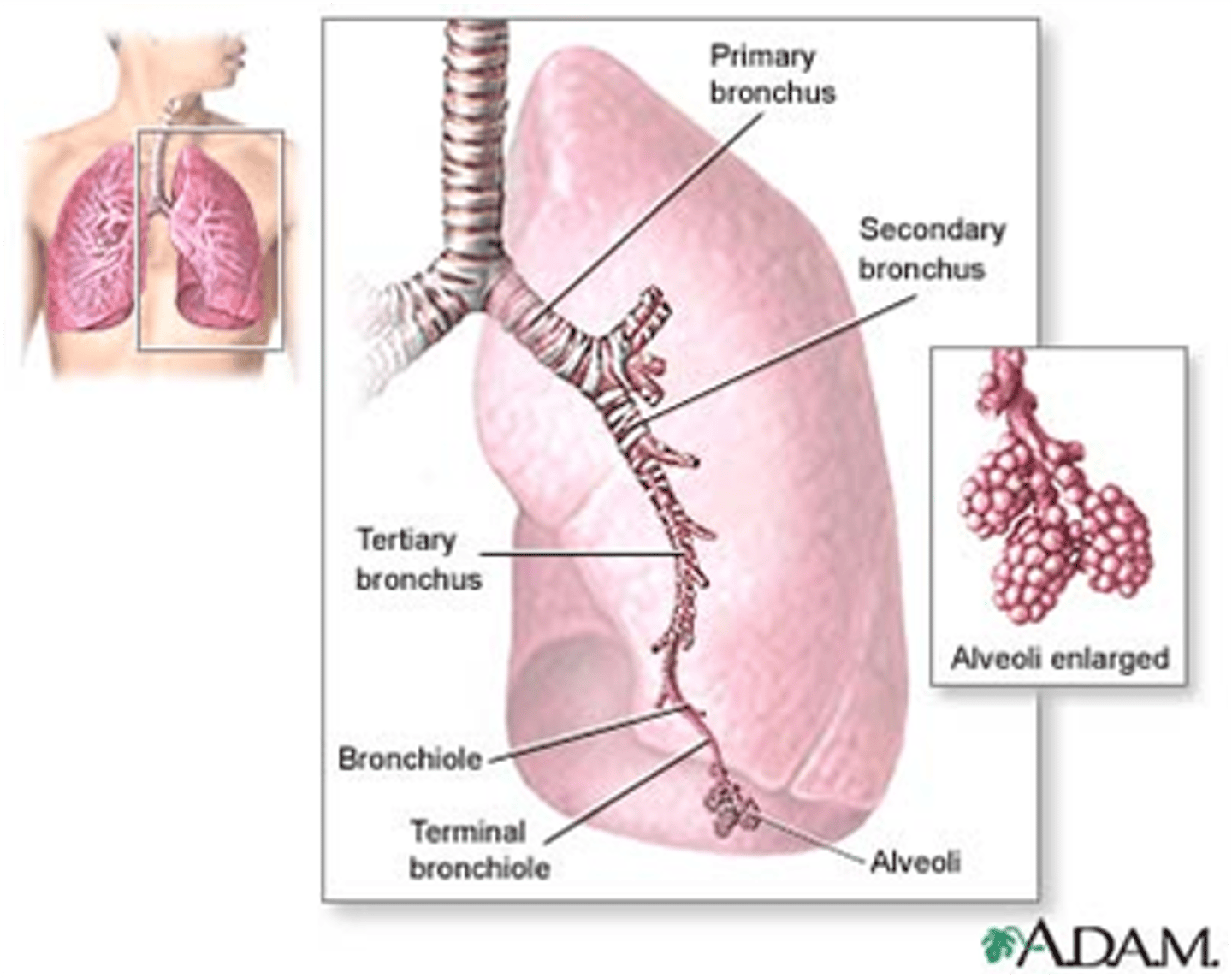
The type II alveolar cells are important because they
produce surfactant
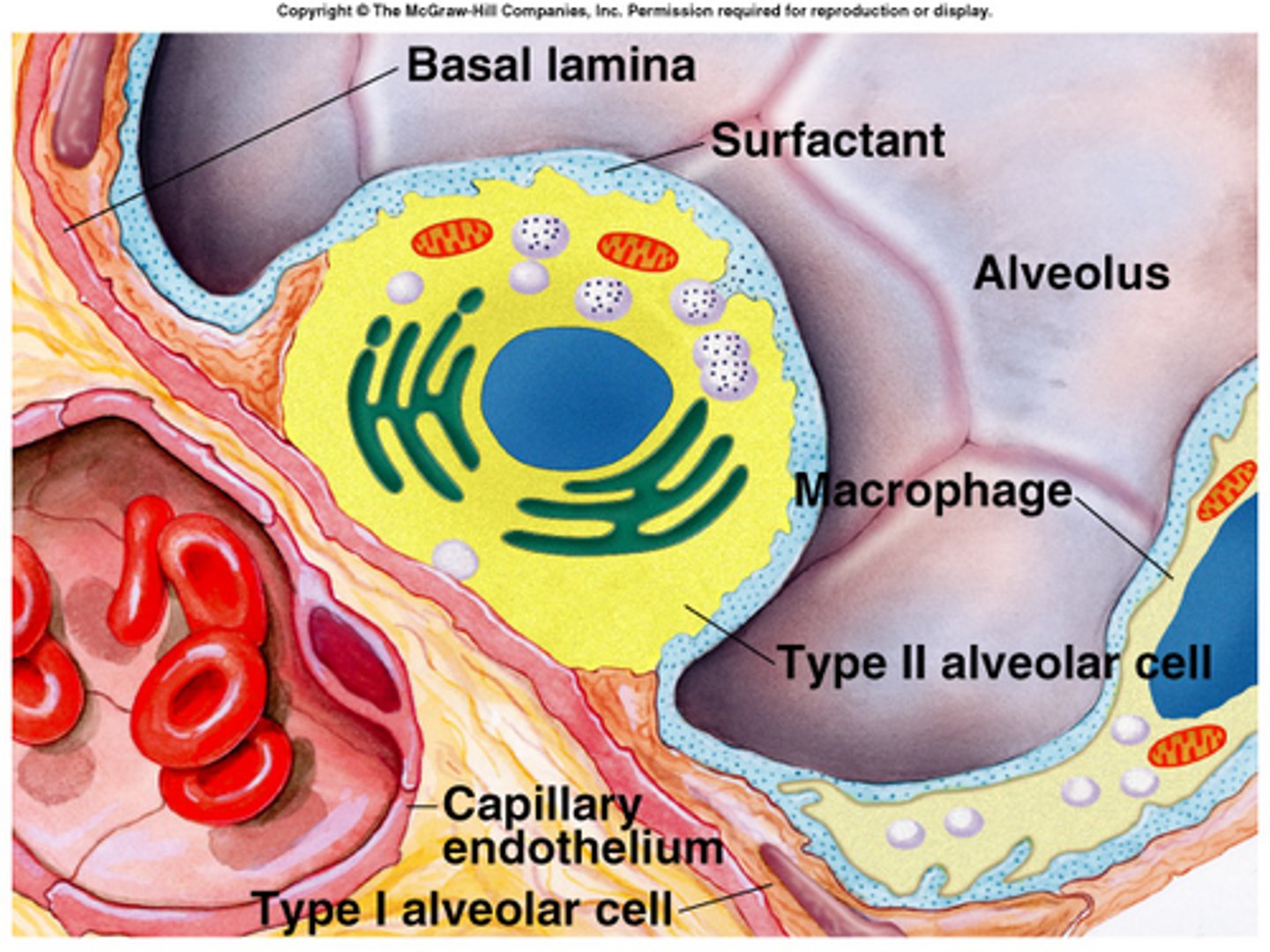
Chronic obstructive pulmonary disease (COPD) is an inflammatory lung disease that causes obstructed airflow from the lungs and alveolar hypoventilation. How will this affect arterial blood gases?
pO2 will be low and pCO2 will be elevated compared to normal.
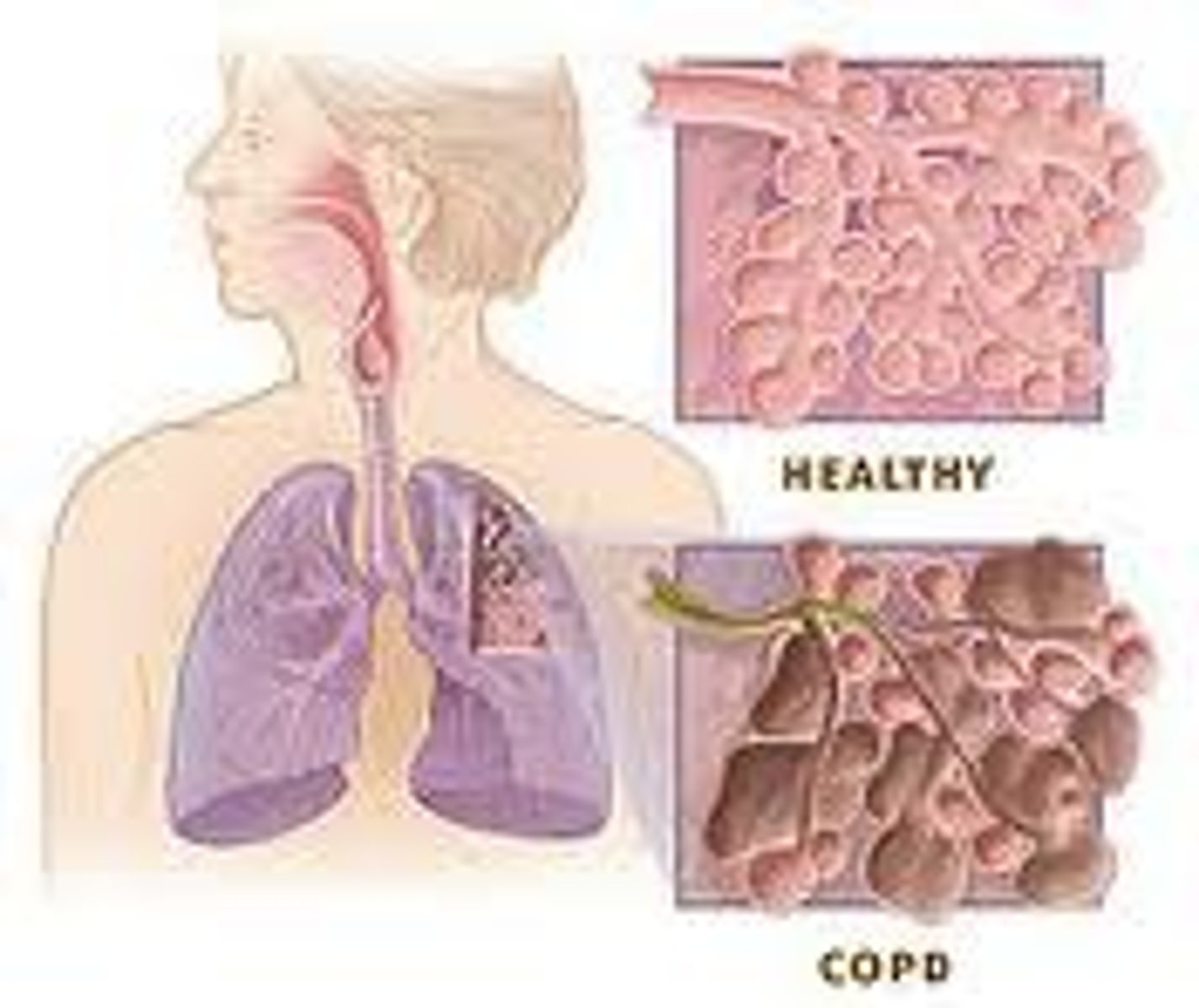
A respiratory physiologist has measured ventilation parameters for each of three subjects: Tidal volume (TV); Respiratory rate (RR), and Anatomic dead space volume (ADSV). Which of the following statements accurately compares the alveolar ventilation in the three men?
Harry's is greater than Dick's, which is greater than Tom's

Curve B below represents the oxygen-hemoglobin dissociation curve for normal body temperature, arterial hydrogen ion concentration, and DPG concentration.
Curve A may represent the dissociation of O2 at very low DPG levels.
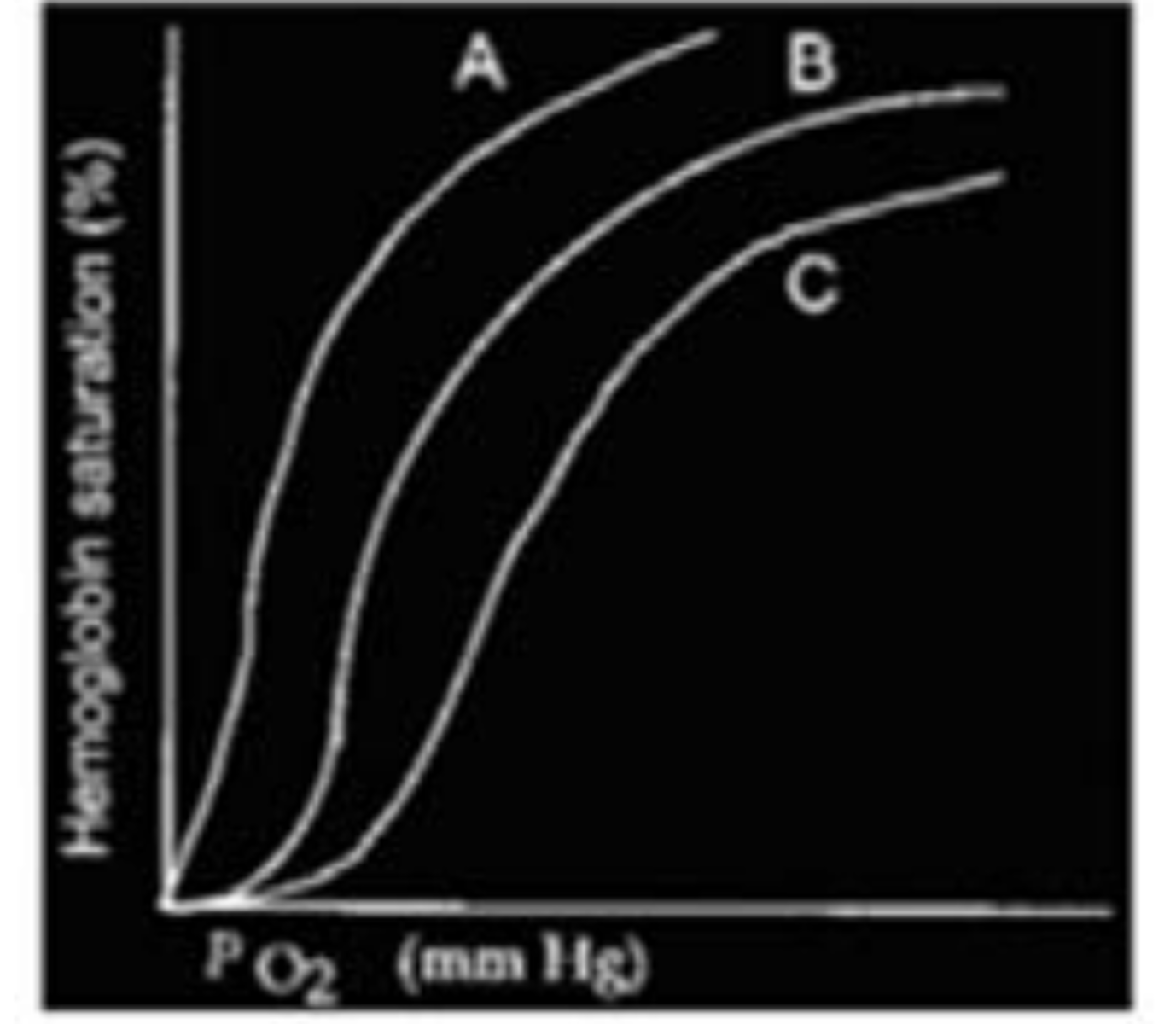
Which of the following statements regarding the transport of CO2 in blood is true?
All of the provided statements are true.
-Some of the CO2 in blood is bound to hemoglobin.
-Some of the CO2 in blood is dissolved in the cytosol of erythrocytes.
-Most of the CO2 in blood is converted to another molecule and transported from the tissue to the lungs in the plasma.
-Some of the CO2 in blood is dissolved in plasma.
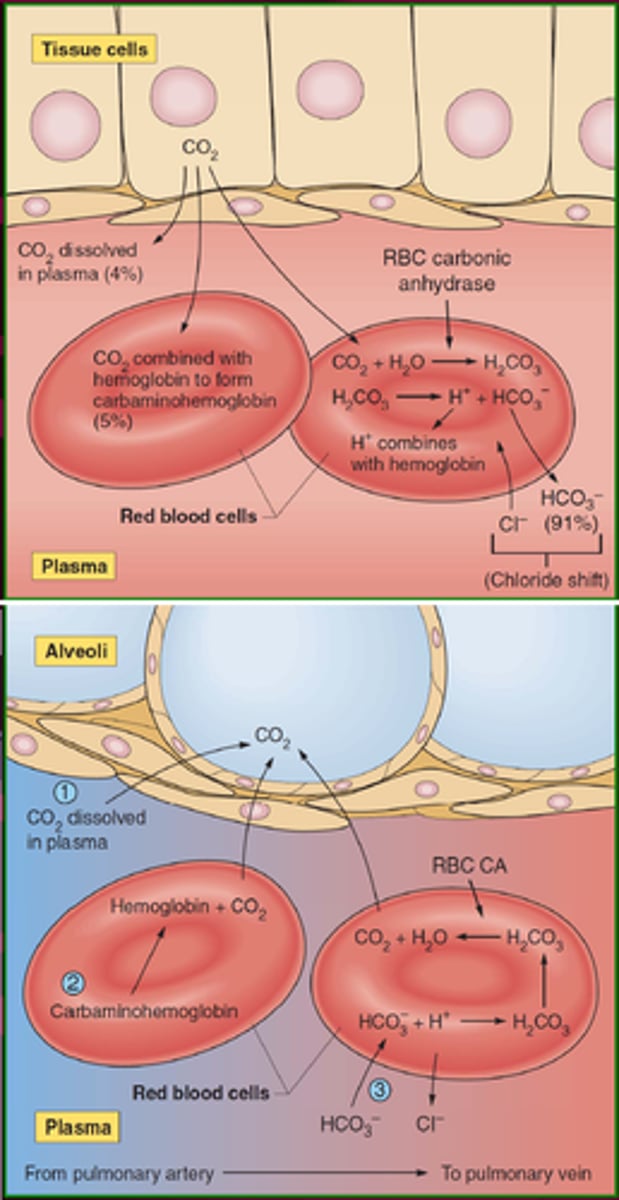
During hyperventilation:
Both the person's level of blood CO2 decreases and the person's level of blood H+ ions decreases; blood pH increases are correct.
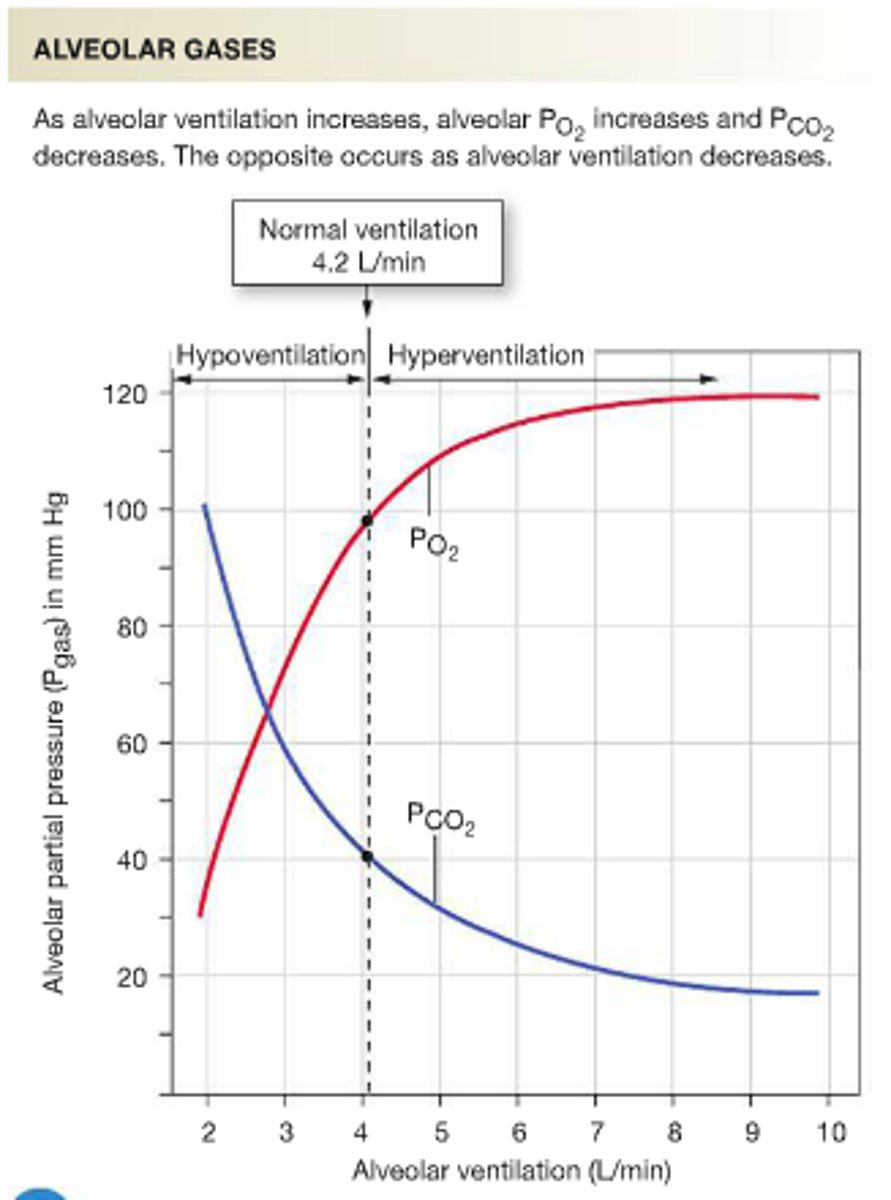
Following strenuous exercise, blood levels of lactic acid are______________compared to pre- exercise levels. This change in acid concentration causes a reflex____________in ventilation by activating_______________.
Increase, increase, peripheral chemoreceptors
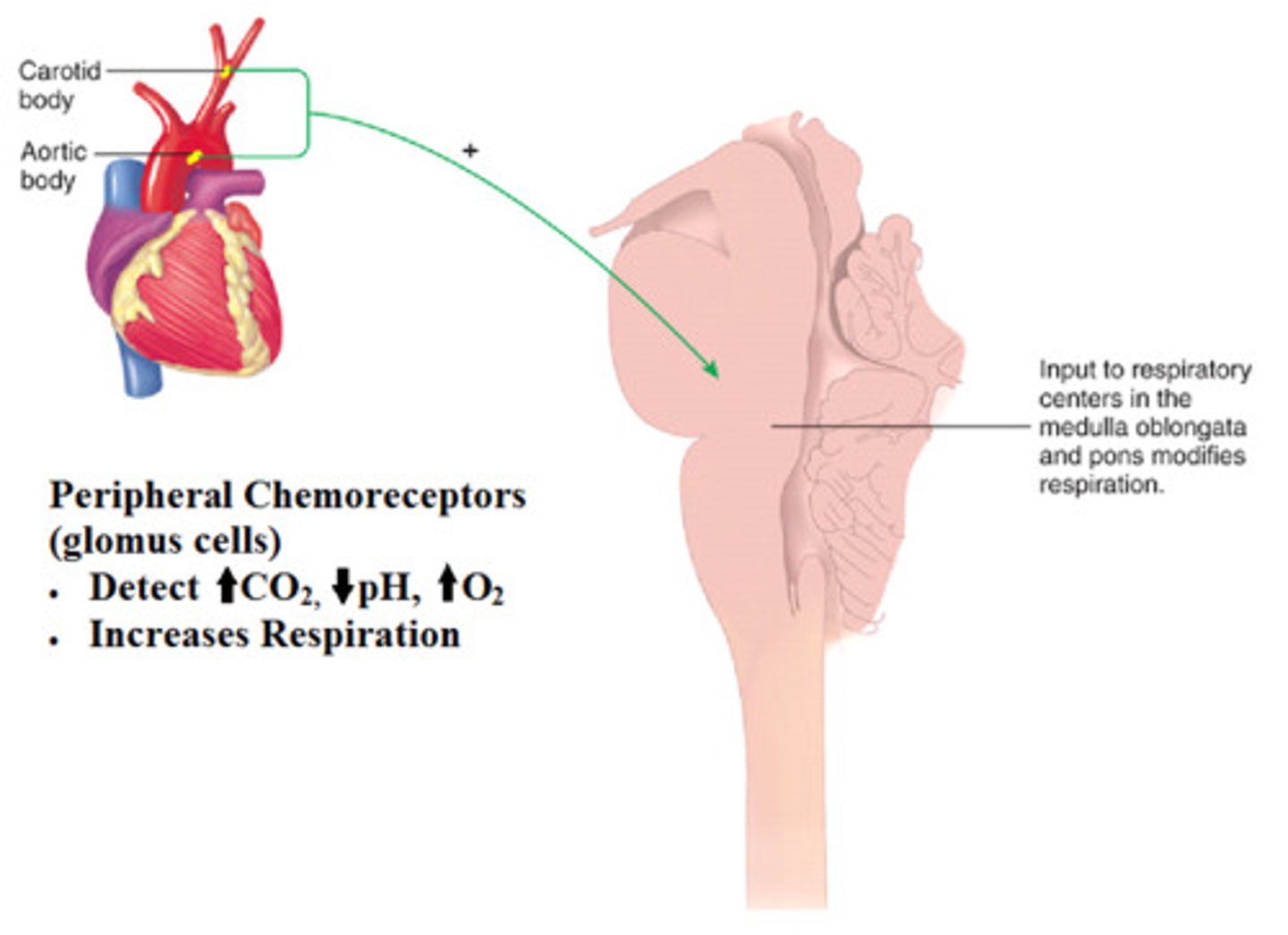
According to Boyle's law, the pressure exerted by a constant number of gas molecules in a container is inversely proportional to the volume of the container. Therefore, decreasing the volume of the container will cause a increase in its pressure. True or false?
True
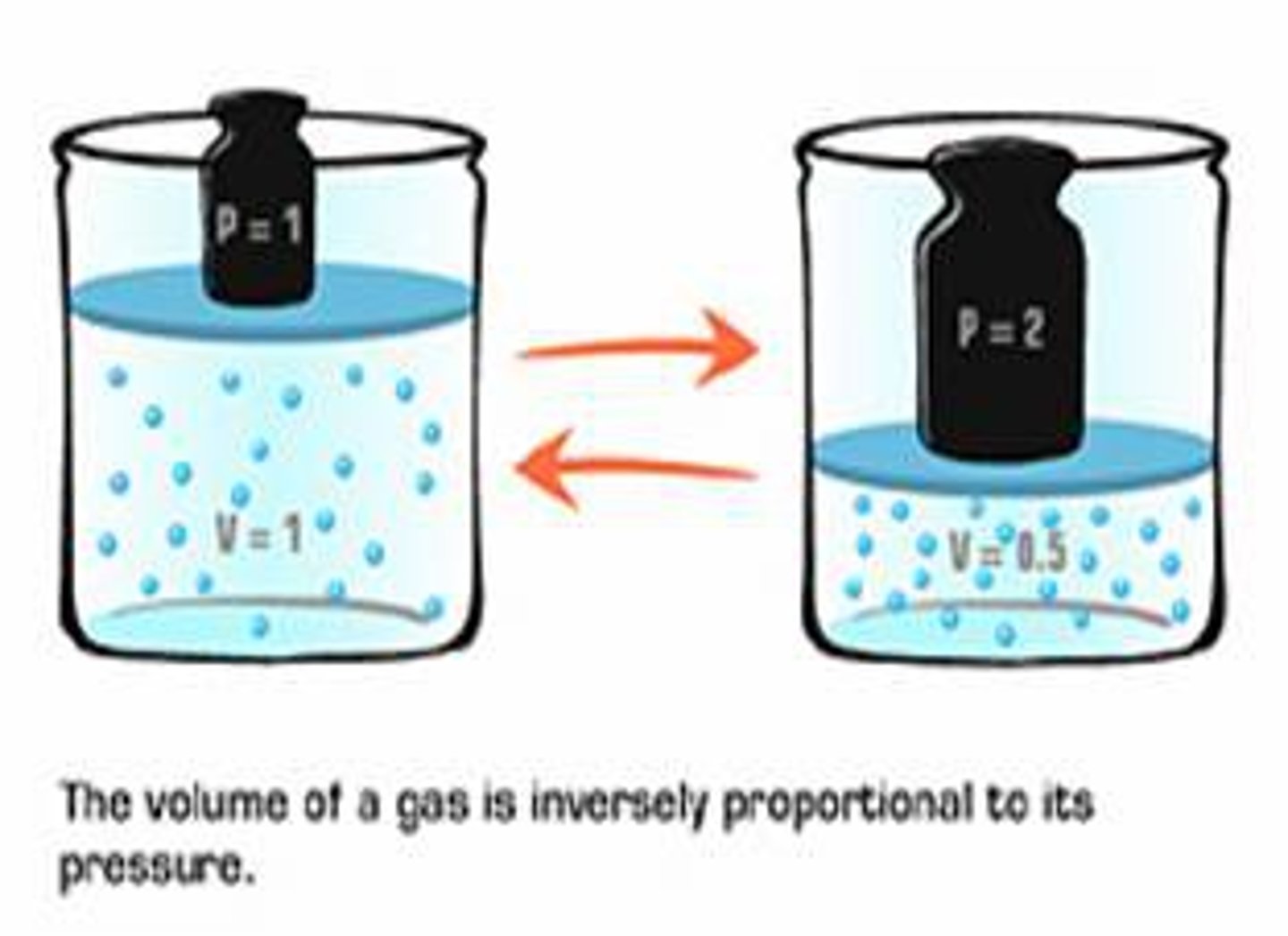
Pikes Peak in the southern front range of the Rocky Mountains is located 14,115 feet above sea level with a barometric pressure of 457 mm Hg. Although atmospheric pressure is 40% lower than the pressure at sea level, the % oxygen content of the air is the same as sea level (21%) and airway pH2O = 47 mmHg. Using this information, calculate the pO2 (dry gas) that would exist in the conducting airways. Normal air pressure at sea level is 760 mmHg.
86.1 mmHg

Functional residual capacity is a term that refers to:
the sum of the expiratory reserve volume and the residual volume.
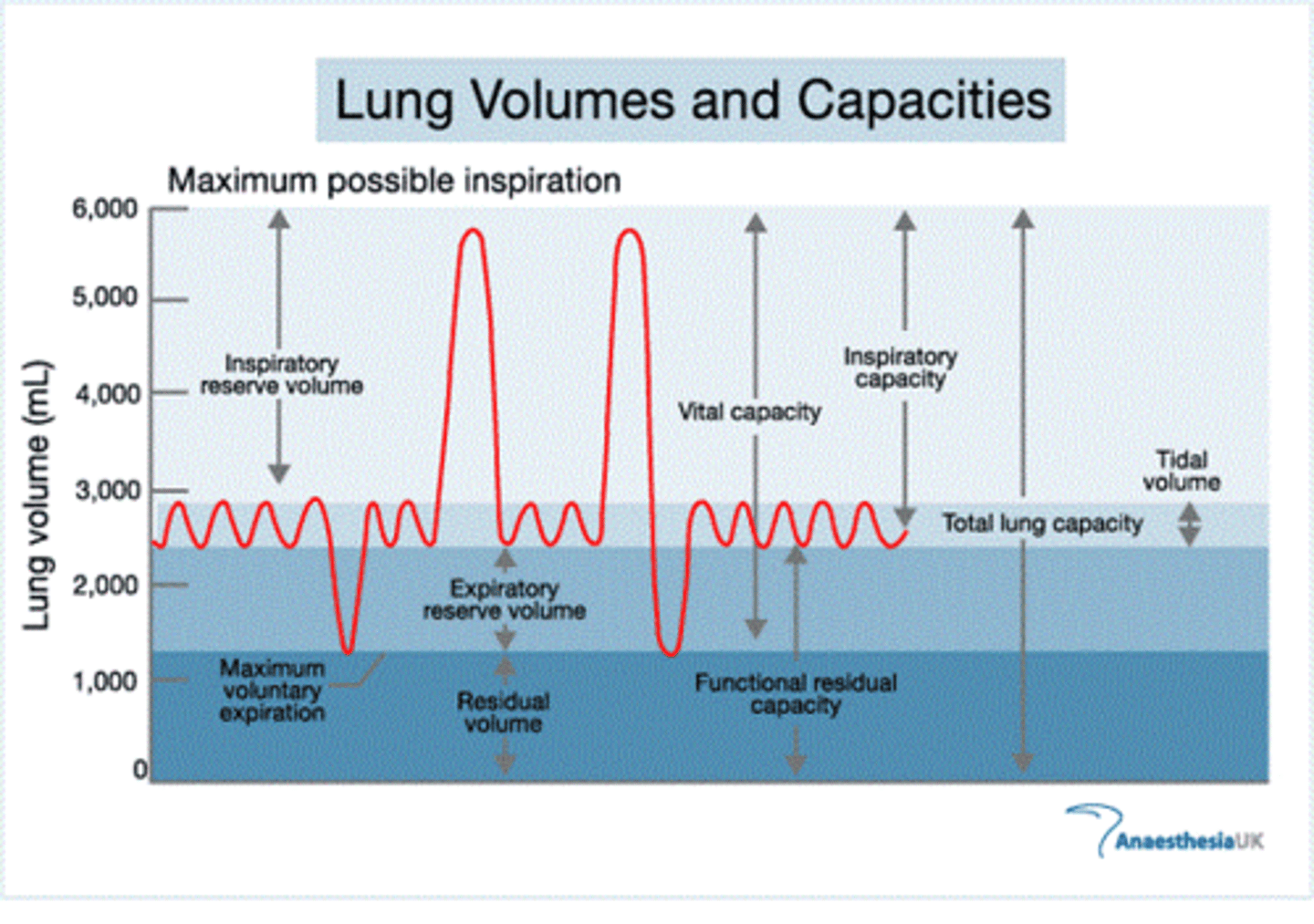
The following reactions take place in the pulmonary capillaries. Match the letters (a-h) next to the appropriate molecule or term (Hb = hemoglobin).
A-Proton(H+)
B-Carbaminohemoglobin
C- Carbonic acid(H2CO3)
D-Carbonic anhydrase
E-Water (H2O)
F-Bicarbonate (HCO3- )
G-Carbon dioxide (CO2)
H-Chloride (Cl- )
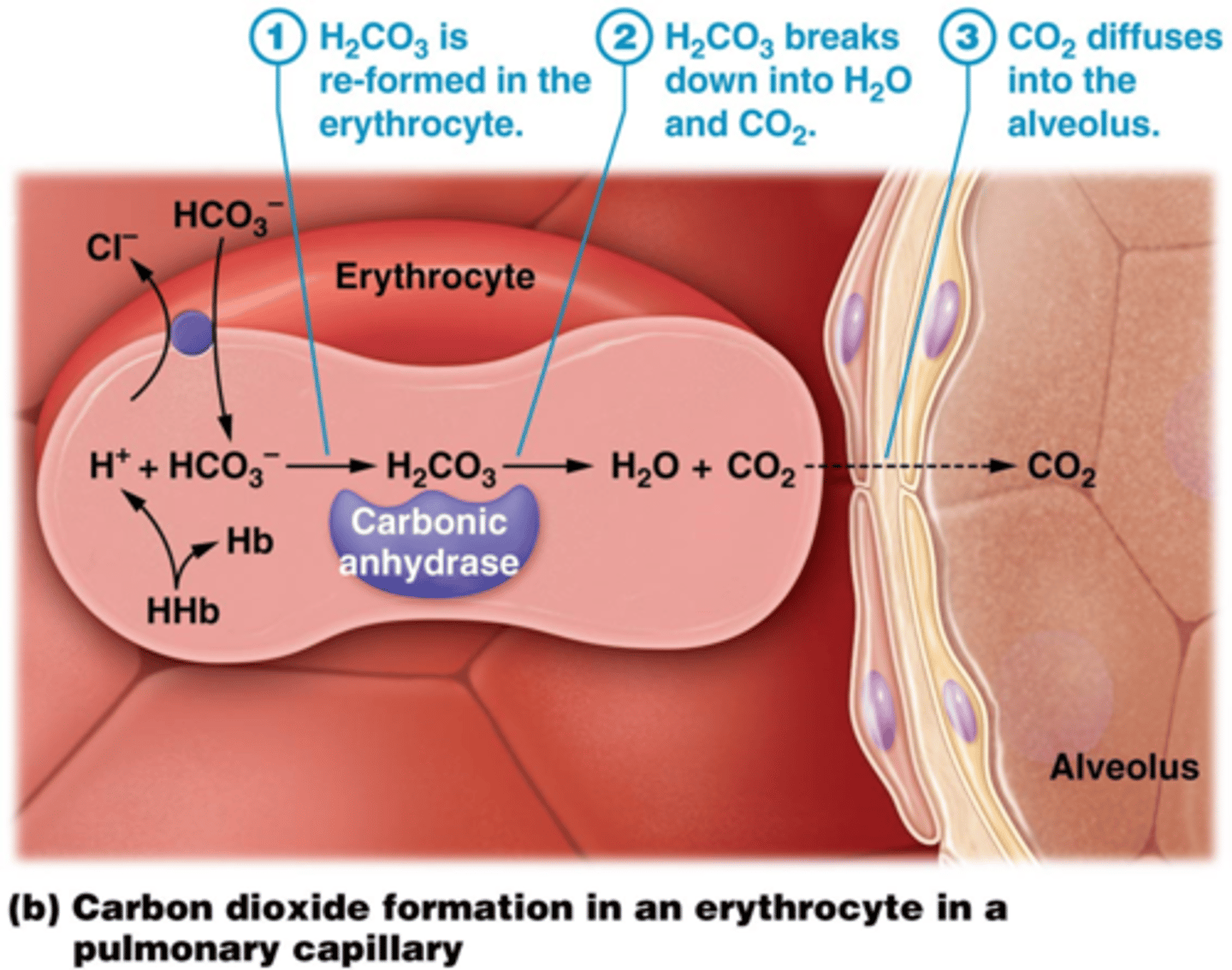
Most of the O2 carried in the blood is dissolved in plasma. True or False?
False
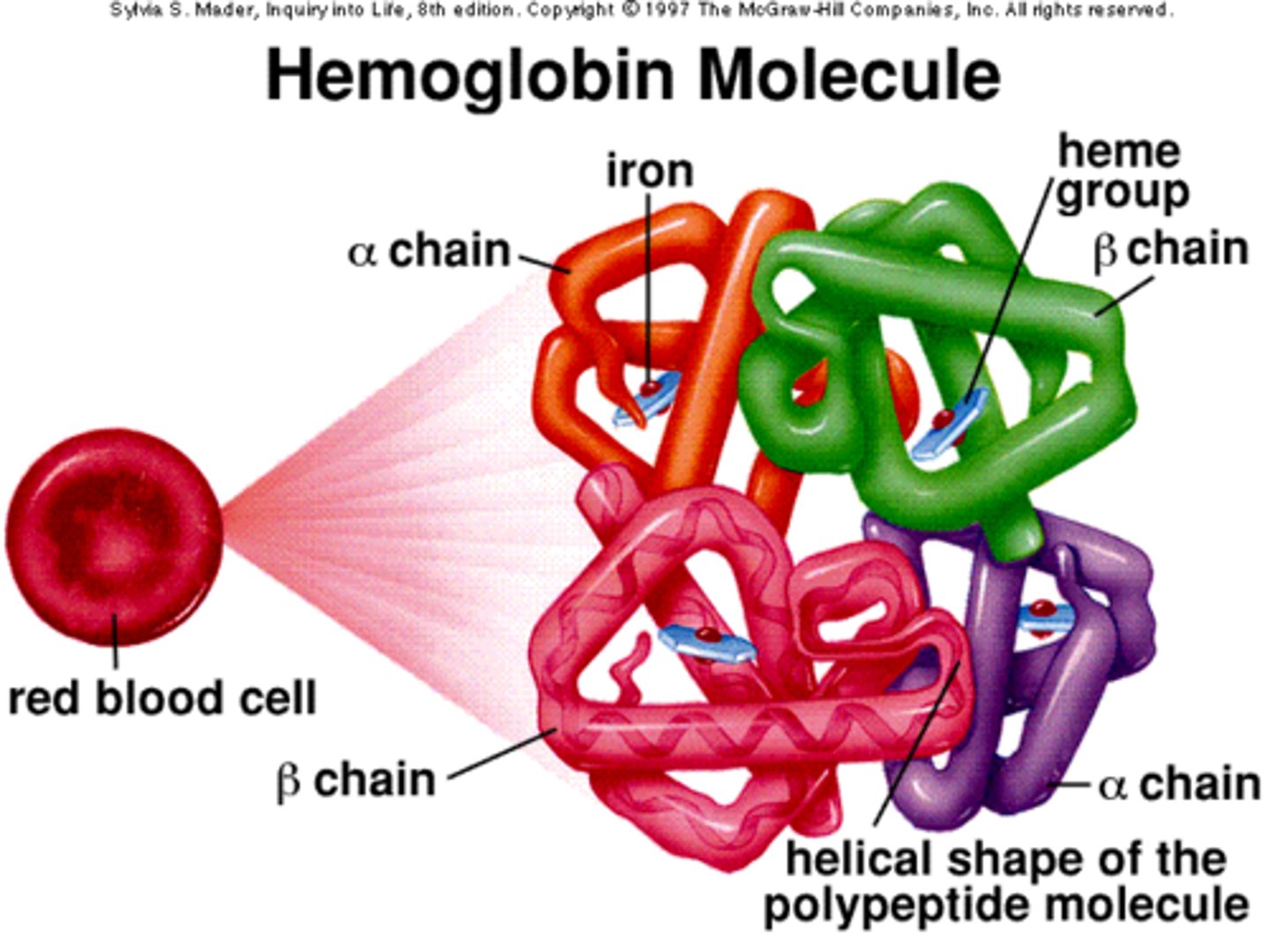
Emphysema is a disease characterized by low lung compliance, obstructed airways, and ventilation-perfusion inequality. True or False?
False
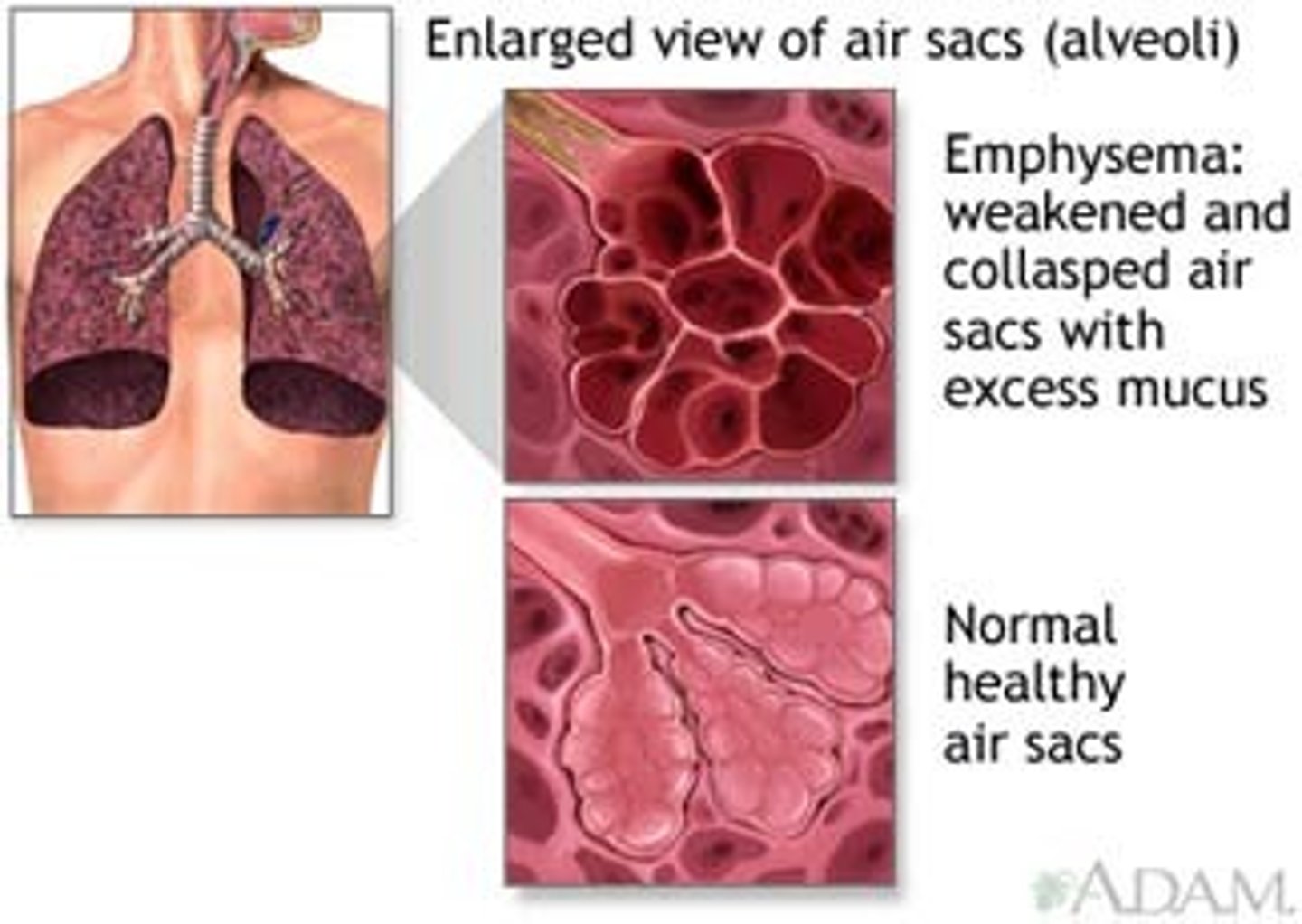
The affinity of hemoglobin for oxygen is decreased by:
Increased diphosphoglycerate (2,3 DPG) concentration
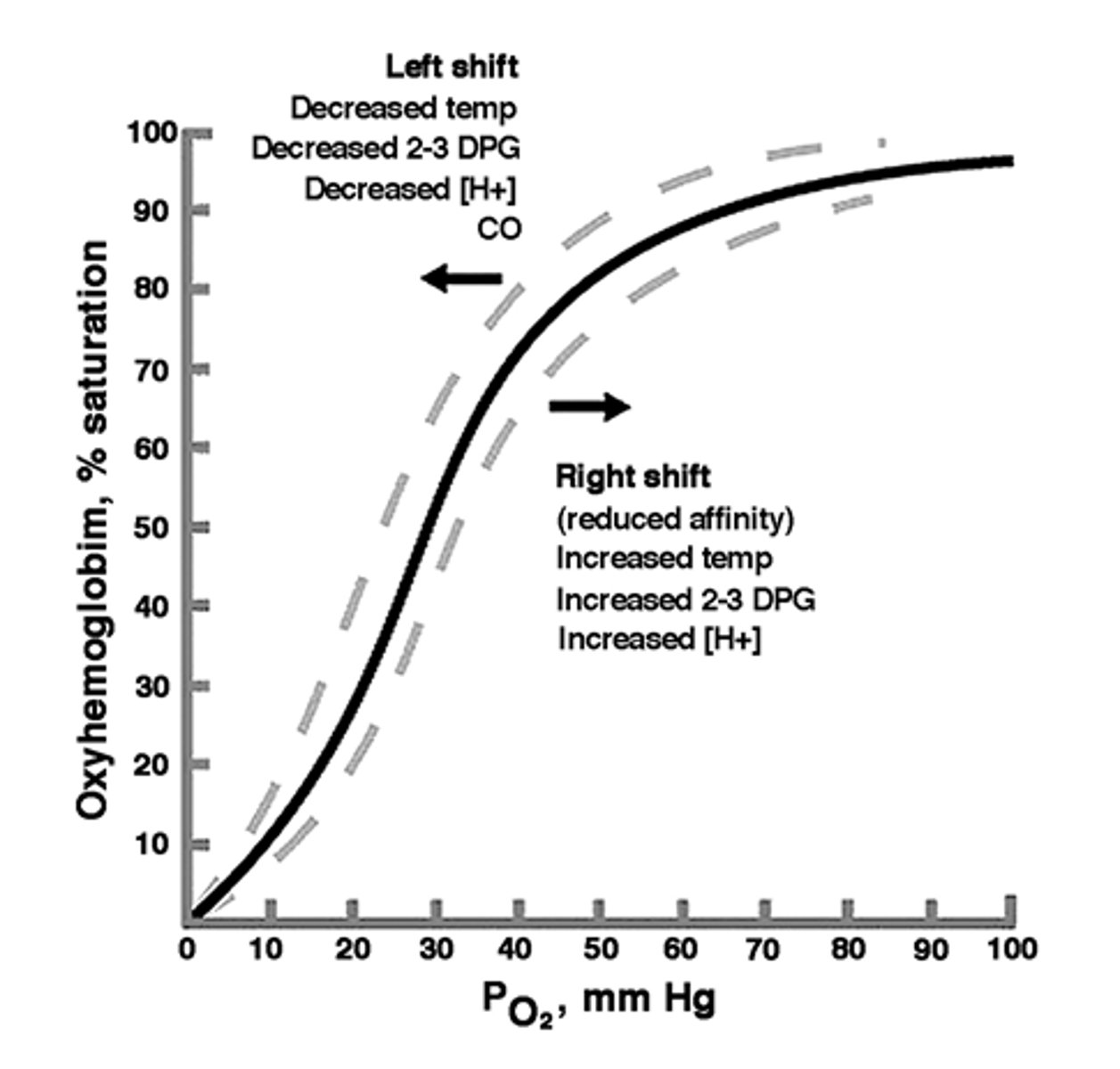
During inhalation/inspiration, the thoracic cage expands and the alveolar pressure is greater than atmospheric pressure; during exhalation/expiration, the ribs and diaphragm return to their original position and the alveolar pressure is less than atmospheric pressure. True or False?
False
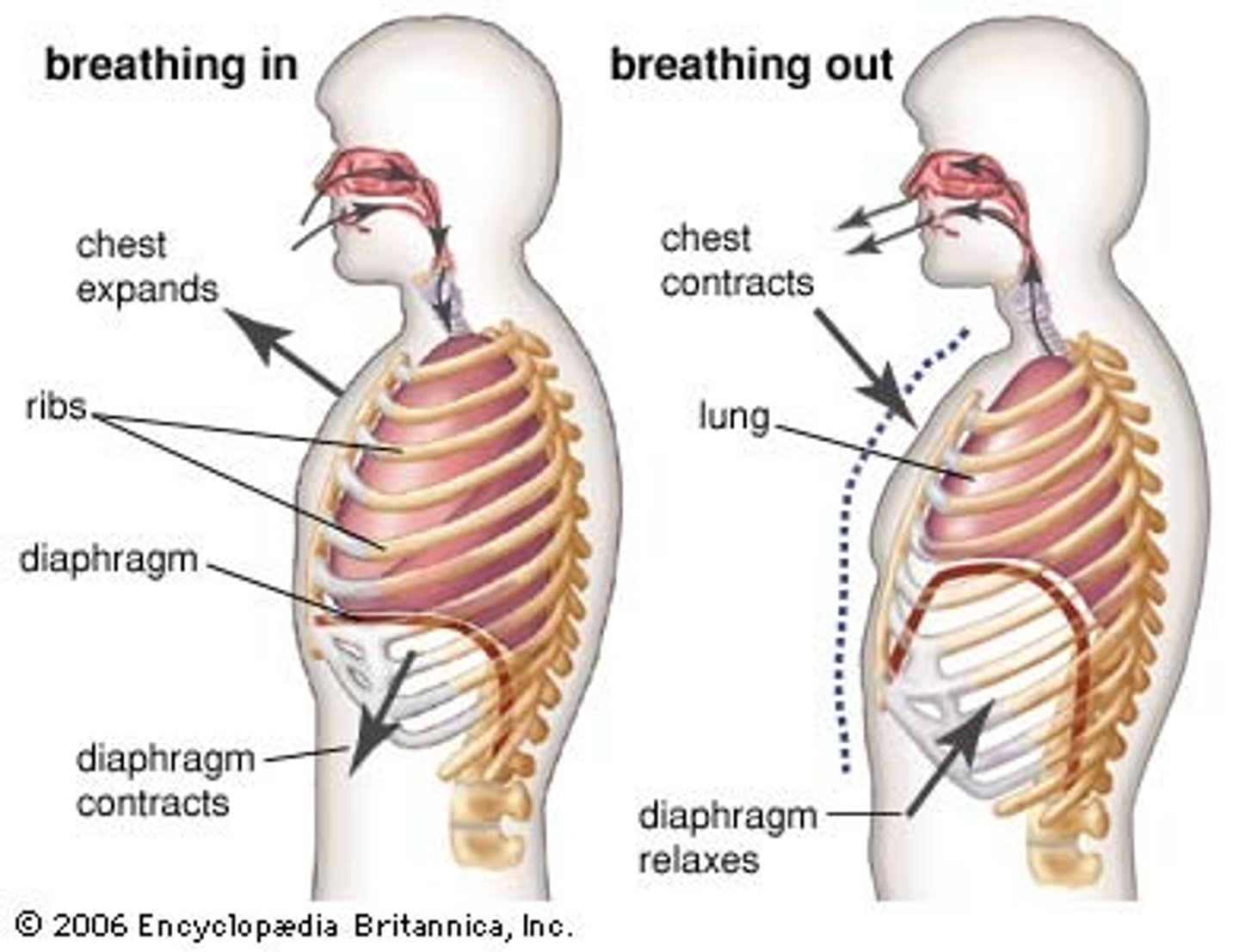
Know and ID the conducting and respiratory zones.
A-Trachea
B-Bronchi
C-Bronchioles
D-Alveolar Sacs
E-Conducting Zone
F-Respiratory Zone
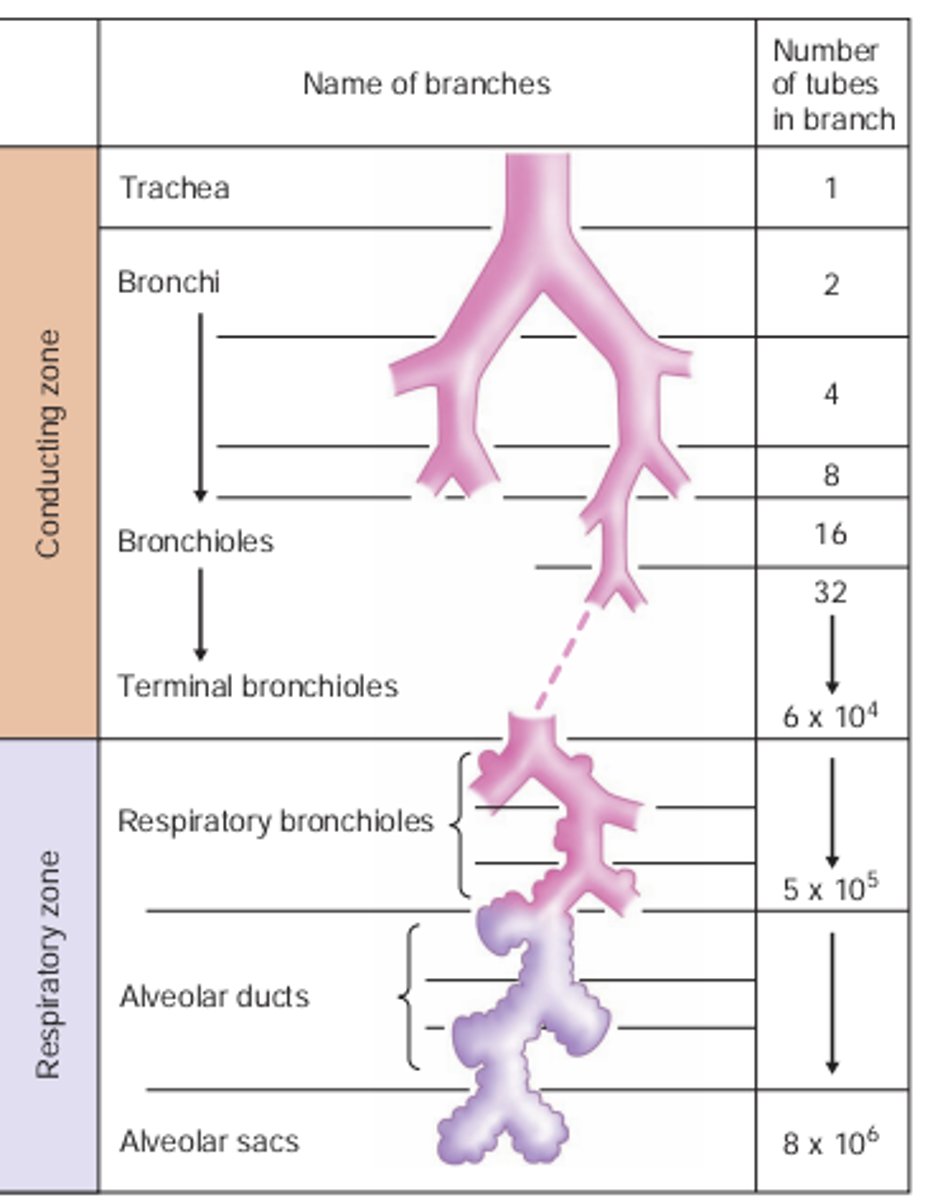
Decreased alveolar PO2 due to chronic obstructive pulmonary disorder (COPD) causes reflex vasodilation of pulmonary arterioles, a process known as ventilation-perfusion matching. True or False?
False
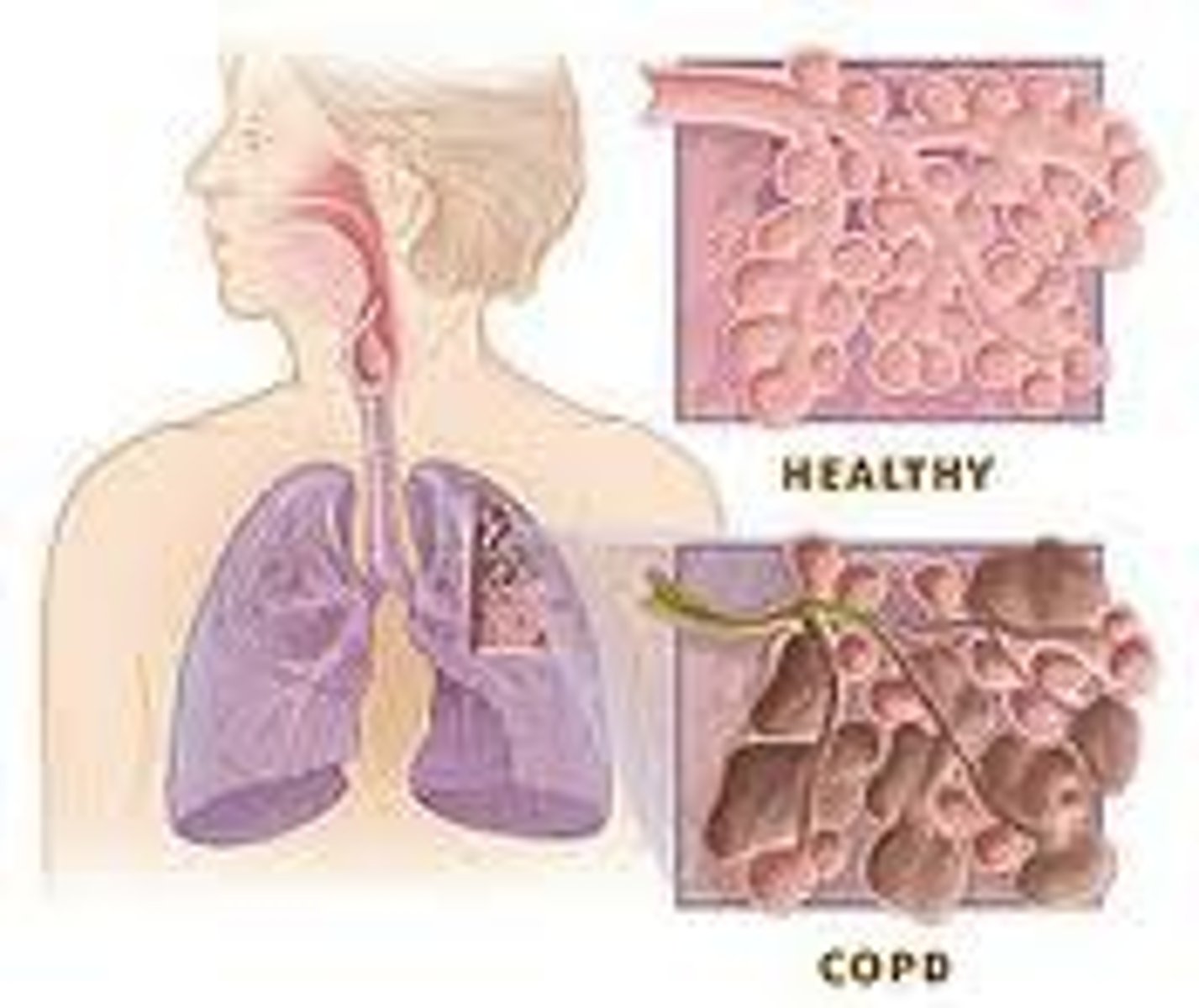
At sea level, the arterial partial pressure of O2 (PO2) is about 760 mm Hg. True or False?
False
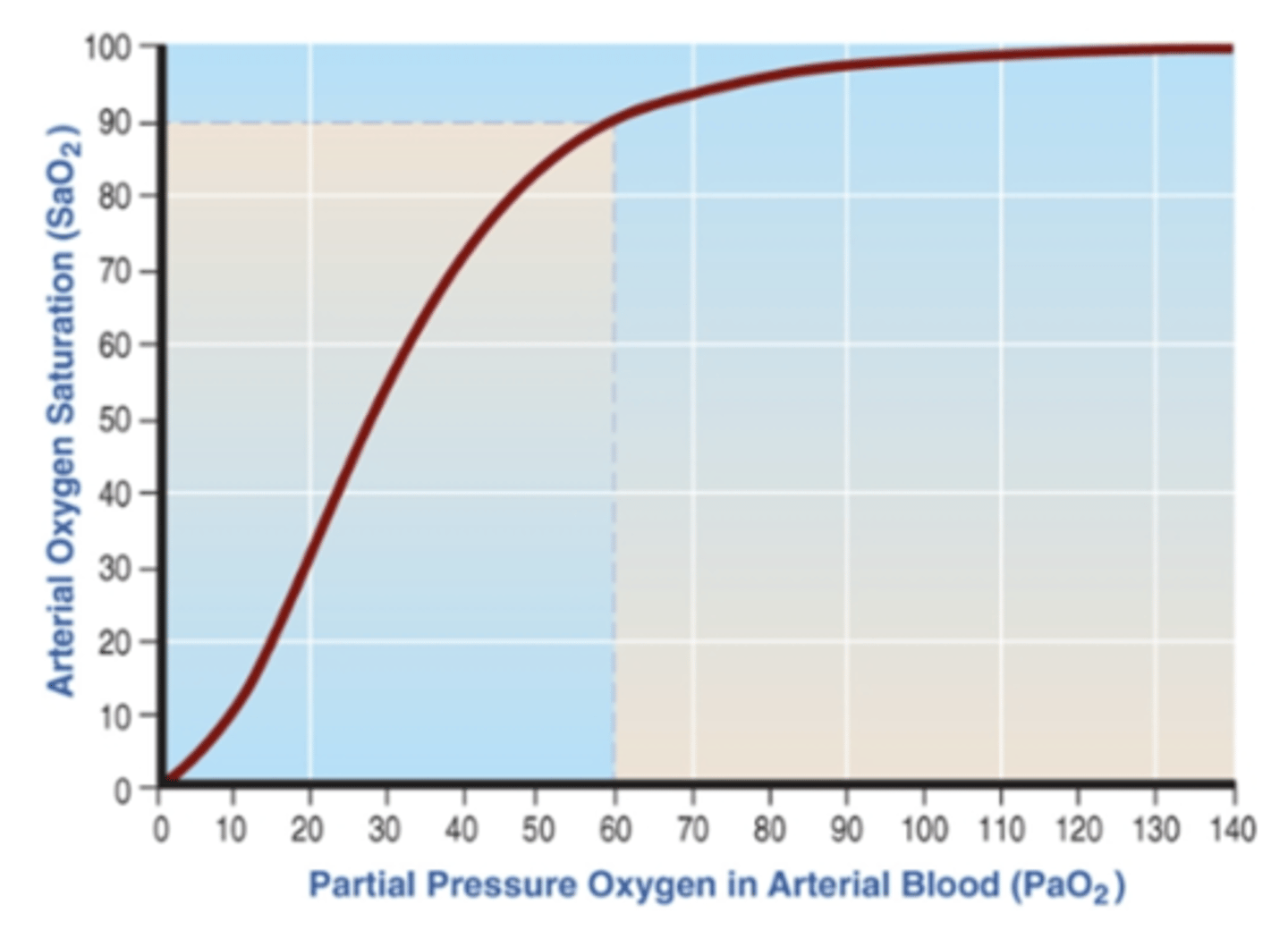
Carbon monoxide poisoning causes hyperventilation through peripheral chemoreceptors that are sensing profound changes in pO2 levels. True or False?
False
